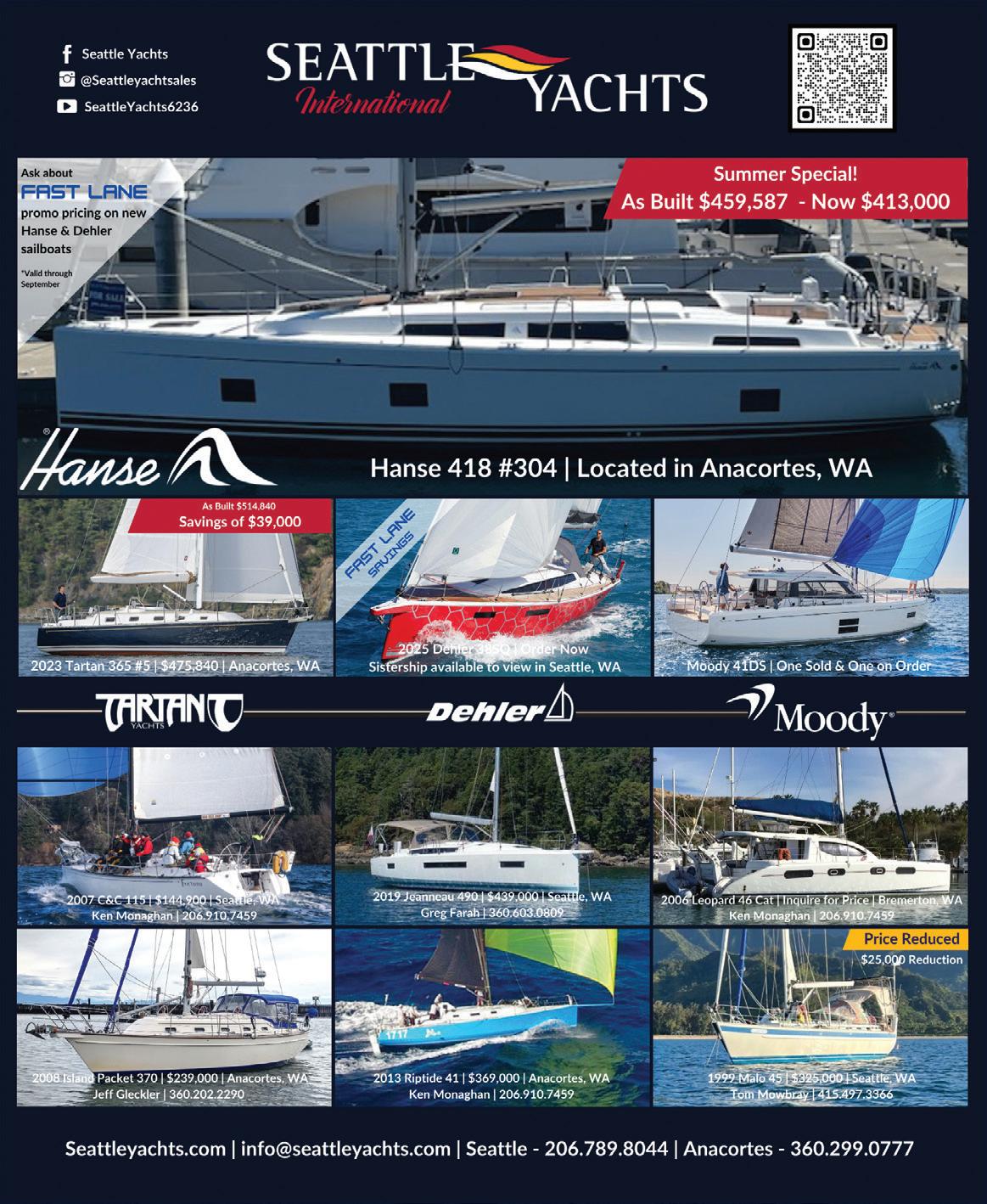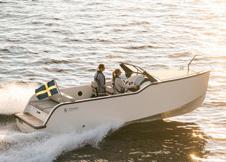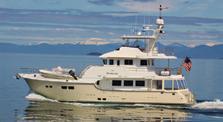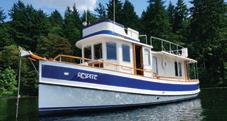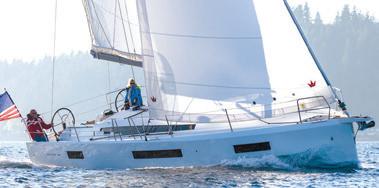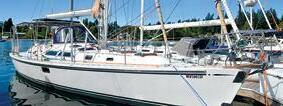


























Experience the next level of high-performance sailing with Samson’s new WarpSpeed® 3 SD, featuring advanced SamsonDry® hydrophobic technology.
• REDUCES WATER ABSORPTION: Less than 5% water absorption compared to the standard 45%
• ENHANCED PERFORMANCE: Lightweight, flexible, and easy to handle
• UNIQUE COATING: Hydrophobic coating on both core and cover
• VERSATILE SIZES: Available in 5/16", 3/8", 7/16", 1/2" and 9/16"
• MULTIPLE APPLICATIONS: Perfect for club racing, maximum performance racing and performance cruising

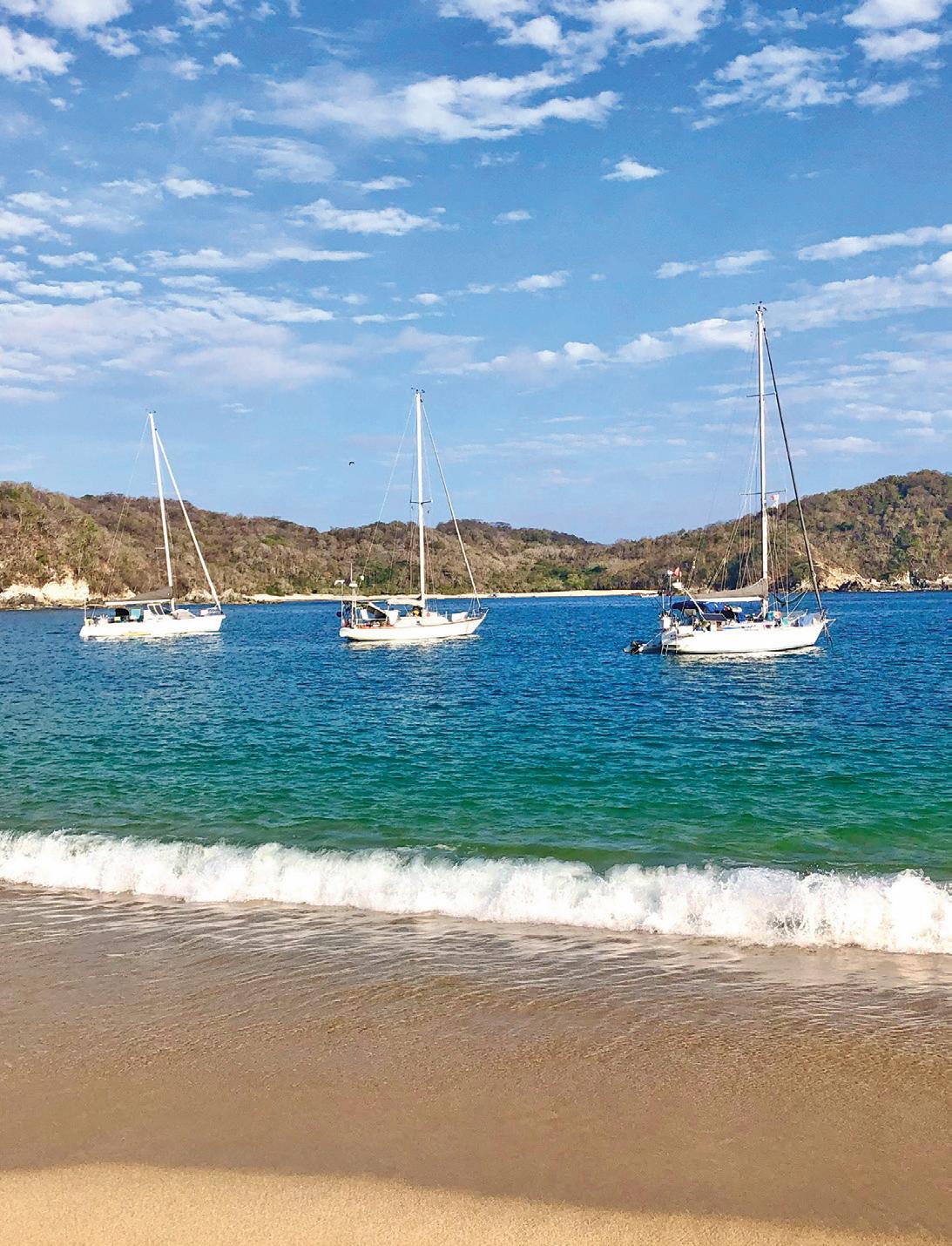
10 YEARS!
The first publication I was involved with at 48° North was September 2014. Check my math, but that means that when this magazine goes to press, it will round a decade at the helm of 48° North, and it coincides with the completion of the magazine’s 43rd year of publishing. A milestone like this invites more than a little self-indulgent retrospection, indescribable gratitude, and disbelief (time flies when you’re having fun). Looking back on these 10 years, so much has happened in sailing and boating in the Pacific Northwest, with 48° North itself, and in my life on and off the water.
There’s remarkable consistency at the core of the sailing and boating communities of the PNW, not to mention with the activities themselves. Sailing has evolved over millennia, so a decade is a drop in the bucket of time. Still, we’ve seen advancements and evolutions in many forms, and one of the many intriguing developments in boating in our special corner of the world is the application of solar boating for distance cruising nearby and in the remote reaches of the Inside Passage (see page 36). I’ve seen a new generation of the most ambitious sailors decide the right boat just isn’t out there and have followed closely while they build from scratch or complete major ingenious reconfigurations. Though I’ll be the first to say we still have a long way to go and there is so much more work to do, there are more tangible efforts today to make sailing and boating more inclusive and equitable than there were a decade ago. One pair of communities I remain incredibly grateful for are the advertisers who help keep your magazine free and you, our wonderful readers, who support them.
Here at the good ship 48° North, plenty has changed since 2014 with two significant mergers (marriages) that have set up the publication for the future. In 2018, 48° North sailed away from its home waters as a small, private, for-profit business, and joined up with the non-profit Northwest Maritime Center in Port Townsend. This has done so much good for 48° North and ensures its legacy in the long run, not to mention that making the magazine for you feels more impactful than ever as an act of service to a non-profit mission that raises the tide for all boats and contributes to the common good. The other noteworthy partnership came in the digital realm. In 2020, 48° North brought the excellent boating news website Three Sheets Northwest into the family, folding it into the broader 48° North brand and bringing Editor Andy Cross onto the team long term. Founders Deborah Bach and Marty McOmber still write a brilliant column for us (page 22). I’m confident that, in the years since, readers have enjoyed both Andy’s fabulous stories of family cruising (see page 32) as well as a vastly improved digital experience.
And then there’s me, your Managing Editor. I suppose I’m a little different than I was 10 years back. I know a lot more about making a magazine, that’s for sure. This decade has seen some of my best moments on the water. I’ve raced in National and North American Championships in the Melges 24 and 505 classes, and enjoyed enough time (a lot) to go from a self-doubting new TP52 trimmer to a confident contributor making one of the best big boat programs in the PNW go fast; not to mention the countless casual evenings with friends racing around the cans. More important to my role with 48° North, I’ve become a card-carrying cruiser with significantly more chops, experience, and personal connection to our cruising grounds and the cruising lifestyle than when I took over this chair—I’m days away from leading our annual cruising rally, and can’t wait! Off the water, I met and married the woman I love, we bought our first house, and welcomed a pair of beautiful children. That part of life looks a lot different a decade on!
I’ll leave you with my profound thanks. It is my absolute privilege and joy to serve, support, and grow this community of boat folk, businesses, readers, and dreamers.
P.S. Speaking of those kids of mine, we’re going to do a change-of-watch here at 48° North for a few months while I spend some leave time with our infant son. You’re in good hands with Andy, and I’ll look forward to returning in the fall.
With gratitude beyond words, I’ll see you on the water,
48º North
Volume XLIV, Number 1, August 2024 (206) 789-7350
info@48north.com | www.48north.com
Publisher Northwest Maritime
Managing Editor Joe Cline joe@48north.com
Editor Andy Cross andy@48north.com
Designer Rainier Powers rainier@48north.com
Advertising Sales Ryan Carson ryan@48north.com
Classifieds classads48@48north.com
Photographer Jan Anderson
48° North is published as a project of Northwest Maritime in Port Townsend, WA – a 501(c)3 non-profit organization whose mission is to engage and educate people of all generations in traditional and contemporary maritime life, in a spirit of adventure and discovery.
Northwest Maritime Center: 431 Water St, Port Townsend, WA 98368 (360) 385-3628
48° North encourages letters, photographs, manuscripts, burgees, and bribes. Emailed manuscripts and high quality digital images are best!
We are not responsible for unsolicited materials. Articles express the author’s thoughts and may not reflect the opinions of the magazine. Reprinting in whole or part is expressly forbidden except by permission from the editor.
SUBSCRIPTION OPTIONS FOR 2024!
$39/Year For The Magazine
$100/Year For Premium (perks!) www.48north.com/subscribe for details.
Prices vary for international or first class.
Joe
Cline Managing Editor, 48° North

Proud members:




















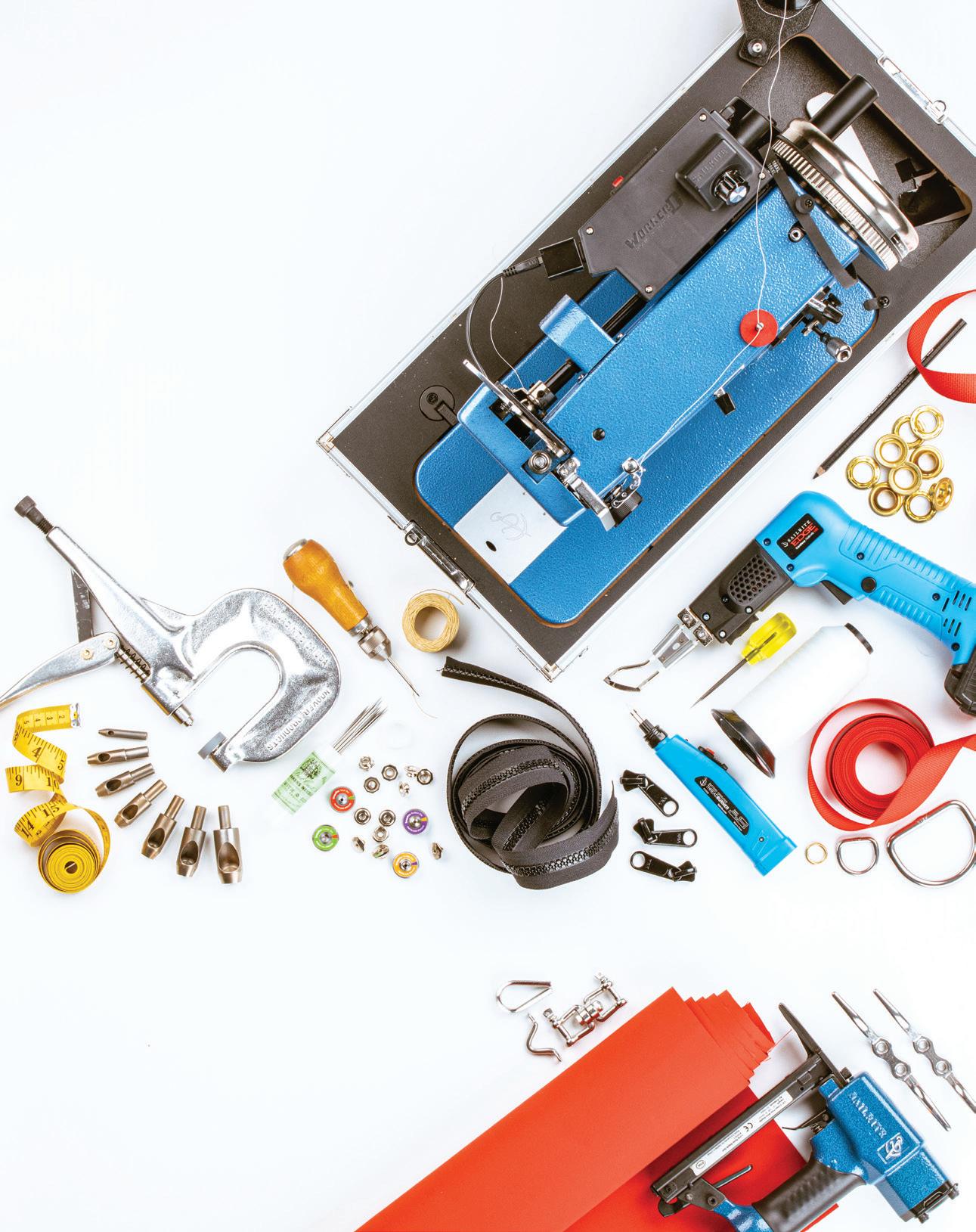

Download a free eelgrass depth map to help guide where you anchor!


Anchor in depths of at least 25 feet when boating in the San Juan Islands. Anchors do not hold well in eelgrass, and they damage the habitat of crabs, salmon, herring, and more! Maps, apps, and more at




Friends of the San Juans








Lessons Learned from Crew Overboard Article
“My Race to the Straits”
Hi Joe,
That’s a very good and scary article in the July issue (View from the Water: My Race to the Straits). Although I often get kidded about it, we have a firm rule on PANGAEA—no one pees at the rail when we’re underway! We have a plastic hospital type urinal below next to the companionway that we pass up for someone to use. You only have two hands, and if one is on your anatomy and one on your zipper there’s none for the boat!
Mac Madenwald and Wendy Gray
Response to Joe Cline’s July Editor’s Letter
“On Bringing Up Sailors”
Hi Joe,
Model Shown Beta 38

Engineered to be Serviced Easily!
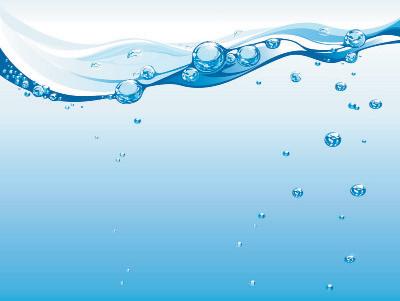
Beta Marine West (Distributor) 400 Harbor Dr, Sausalito, CA 94965 415-332-3507
Pacific Northwest Dealer Network
Emerald Marine
Anacortes, WA • 360-293-4161 www.emeraldmarine.com
Oregon Marine Industries Portland, OR • 503-702-0123 info@betamarineoregon.com
Access Marine Seattle, WA • 206-819-2439 info@betamarineengines.com www.betamarineengines.com
Sea Marine Port Townsend, WA • 360-385-4000
info@betamarinepnw.com www.betamarinepnw.com
Deer Harbor Boatworks Deer Harbor, WA • 844-792-2382 customersupport@betamarinenw.com www.betamarinenw.com
Auxiliary Engine 6701 Seaview Ave NW, Seattle WA 98117 206-789-8496 auxiliaryeng@gmail.com
Just wanted to reach out and tell you how much I loved your recent Editor’s Letter.
I sent my kids to sailing camp in Gig Harbor this last week. One of them liked it (more so the social time than the actual sailing), and the other dropped out halfway through. I struggled with how hard to push/encourage her to finish the week, but when she was in tears two nights in a row and begging me not to take her back, I knew it was time to back off. Sure, I would love to have kids who develop a passion for sailing, but my real goal is to make sure they have a net positive relationship with boating.
We bought a little 14-foot C Lark (so much easier to take out for a sail than the 43-foot liveaboard!) and the kids really do enjoy coming out for an afternoon sail with us. So I’m learning that there’s more than one way to build up competence and confidence, and most of all to provide lots of positive experiences on the water.
Congrats on your new little one!
Samantha McLenachen
Swiftsure Race Correction
Hi Joe,
I absolutely adored reading Peter Salusbury’s summary of this year’s Swiftsure International Yacht Race! That said, I wanted to make sure credit was given where credit was due: Line honors for the entire fleet went to Nige Oswald’s Makika, his Farrier F-25C, skillfully crewed by Gavin Brackett and Miles Johannessen. They finished to a champagne shower at 20:29, more than two hours ahead of the next boat, Zvi
That said, both boats were well on their way home by the time I returned to the Inner Harbour: I competed on the Lightship Classic course with the fantastic PANGAEA family and can verify that, for everyone who participated in this year’s Swiftsure, it was a rollicking good time—even when the wind shut off. Congratulations to all the competitors, and I look forward to seeing you all again in Victoria next year!
Ryan Samantha Carson

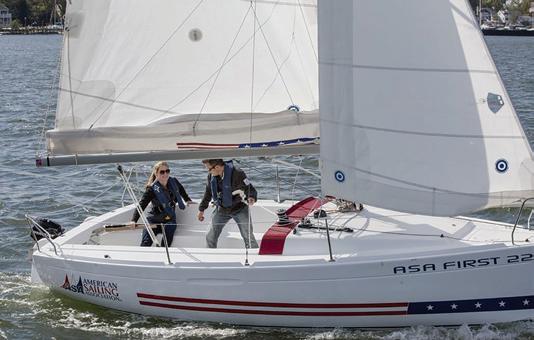





48° North has been published by the nonprofit Northwest Maritime since 2018. We are continually amazed and inspired by the important work of our colleagues and organization, and dedicate this page to sharing more about these activities with you.
There are a lot of ways to learn to sail, but you’d be hard pressed to find anyone who doesn’t recommend some education to jumpstart the skill development of any budding sailor. Deciding on the right course in the disorientingly foggy array of pathways and outlets can certainly steal some wind from your sails, and the right choice of a sailing school will be unique to each individual and their goals. Still, good experiences from fellow students can reveal a lot.
Northwest Maritime (NWM) has an evergrowing history of teaching sailing, and the keelboat classes for adults are one avenue that has blossomed in recent years. Recent students have shared survey responses after their courses like the following: “I am completely satisfied and inspired to sail.” “Thank you so much for the opportunity to learn at this beautiful facility!” and “The best part of the class were the instructors— professional, patient, and extremely knowledgeable!” Readers of 48° North will understand the enormous power of positive experiences on the water, and NWM is certainly providing them.
The organization’s professional US Sailing instructors not only usher soon-to-be-sailors into the community and facilitate their development of skills and knowledge, but they have also helped to shape a curriculum that recognizes the varying needs and desires of adult learners. While many schools provide a single Basic Keelboat offering, the NWM sailing classes for adults break that single course into three enriching on-thewater opportunities: Intro to Sailing, Learn to Sail, and Beyond Basic Keelboat. Learn to Sail covers the full Basic Keelboat certification; so it’s really Intro to Sailing and Beyond Basic Keelboat that show deeper understanding of a new sailor’s needs. It may be why an astonishingly high percentage of students say they got exactly what they wanted



out of a sailing class, would recommend it to a friend, and would very much like to participate in more maritime activities. Intro to Sailing gives students a chance to dip a toe and catch the sailing bug without committing as much time and resources. It’s an invitation to experience the beauty of sailing in the stunning and boat-crazy surroundings of Port Townsend Bay, and is a fun and rewarding experience for anyone visiting the area for any reason. In town for PT Film Festival? Take a break from the dark, crowded theaters with a pleasant sail! More serious students may also see it as a fun way to prepare themselves to get more out of the Learn to Sail class when they get there. Perhaps even more important is Beyond Basic Keelboat. Any knowledgeable sailor will remind those just getting into sailing that a course is the first step on a journey, not an end point. Completing Basic Keelboat is fantastic, but if a new sailor doesn’t have the opportunity to reinforce those skills and pile-on new experiences, the motivation and preparedness for future sailing can diminish. Just like on a sailboat, the ability to steer requires movement through the water!
Whether packed into a more intensive timeline, or over a series of weekends, NWM’s keelboat sailing classes for adults draw students to a region, a town, and a facility that’s worth the trip for any reason. A new love of sailing and skill to match will make a good visit one that might be lifealtering in the very best way.



PORT TOWNSEND BAY TOURS “Best way to see the Bay!” Saturdays, June 28-August 31
Northwest Maritime WelcomeCenter
All tours are 1 hour in length.
INTRO TO SAILING: SAILING ESSENTIALS
Aug 2, Aug 16, Aug 30, or Sept 13 | 2 - 5 PM
Three-hour Intro Class
$99 non-member and member
BASIC KEELBOAT FULL COURSE
July 29–Aug 2, Aug 5–9, Aug 19–23, or Aug 26–30 | 9 AM–4 PM
Basic Keelboat certification in 5-day course
$1100 non-members, $1045 members
BEYOND BASIC KEELBOAT: SKILL DEVELOPMENT
Aug 3, Aug 17, Aug 31 or Sept 14 | 12 - 4 PM
$199 Non-member, $179 Member
* Basic Keelboat Recommended
BEYOND BASIC KEELBOAT: DOCKING
Aug 4, Aug 18, Sept 1, or Sept 15 | 1- 4 PM
$149 non-member, $134 member
* Basic Keelboat Recommended
WOODEN BOAT FESTIVAL
September 6-8
Northwest Maritime Center Point Hudson
OFFICIAL WA STATE BOATER CARD CLASS
September 21, 8:30 AM - 5:30 PM
$40 non-member, $29 member EVENTS & CLASSES

The Northwest Marine Trade Association (NMTA), Washington Sea Grant and others recently announced the certification of Leschi and Lakewood Marinas as Clean Marinas. The prestigious Clean Marina certification, established by NMTA in partnership with Sound Keepers, requires marinas to undergo a rigorous assessment of their environmental practices and plan improvements for the future.
“Recently our marinas at Leschi and Lakewood on Lake Washington were awarded the Clean Marina certification. This acknowledgement serves as a valuable reminder to staff and boaters that we are dedicated to best management practices, committed to environmentally sound business practices,” said Dwight Jones, CEO of Marina Management LLC.
The certification recognizes Leschi and Lakewood Marinas’ ongoing efforts to protect Lake Washington’s delicate ecosystem, including implementing waste management and recycling programs; utilizing environmentally friendly cleaning products; promoting sustainable boating practices; and educating staff and customers about environmental responsibility.
The Washington Clean Marina Program Steering Committee congratulates Leschi and Lakewood Marinas on this achievement and commends their dedication to environmental stewardship.
» www.cleanmarinawashington.org

It was recently announced that Signature Yachts will now be the exclusive Beneteau Inboard Powerboat dealer for the Pacific Northwest region. The partnership between the two is set to bring a new level of luxury and exceptional boating experience to boat enthusiasts in the area.
With a commitment to quality, innovation, and superior craftsmanship, Beneteau has established itself as a premier brand in the boating world, and Signature Yachts is honored to be chosen to represent them in the Pacific Northwest. “We are thrilled to be named the exclusive Beneteau Inboard Powerboat dealer for this region,” said Tori Parrott, President of Signature Yachts. “This partnership allows us to provide customers with access to some of the finest inboard powerboats on the market, backed by the exceptional quality and reputation that both Beneteau and Signature Yachts are known for. By adding the Beneteau inboard powerboat line, we can now accommodate our customers who are looking to switch from sail to power but want to stay in the Beneteau family because they love the brand so much.”
Signature Yachts will represent the sleek and sophisticated Swift Trawler models and the powerful and versatile Gran Turismo models from Beneteau. For those interested in experiencing the luxury and performance of Beneteau inboard powerboats, Signature Yachts invites you to visit their marina in Seattle, where you can explore the latest models and receive expert guidance from their knowledgeable team of professionals.
» For more information, visit www.signature-yachts.com
Back by popular demand, the Artful Sailor in Port Townsend will be holding two workshops this fall for sailors: Palm ‘n’ Needle Handsewing Skills on September 21 and Sewing Machine Maintenance and Skills on October 5. The class project for Palm ‘n’ Needle Handsewing is a sailmaker’s apron that employs most of the same handwork skills involved in making a ditty bag, but is doable in a day. The Sewing Machine class is a one-day, basic course for machine-oriented Stitchmates who want to learn how to put an older machine to use both onboard and ashore.
For details and registration visit, » www.theartfulsailor.com






by Bryan Henry
During their six-month migration from Alaska to Hawaii, humpback whales lose up to eight tons of body fat.
Young humpback whales have been reported breaching 130 times in 75 minutes.
The flippers of a humpback whale can be 16 feet long.
The humpback’s flippers are nearly one-third the length of its entire body.
A blue whale’s tongue is 10 feet thick and weighs as much as an elephant.
Blue whales eat more than one million calories of krill (tiny shrimp-like crustaceans) a day.
A blue whale consumes as many calories during one season of feeding than a human does in a lifetime.
1 West Indies island
6 Forward of the bow
9 Blvd., abbr.
10 Rope used to tie something off
12 Technology used detect and locate distant objects
14 Email address intro
15 Strike
16 Competent
17 Large sail flown from
“I did it __ way”
36 Goes to see 37 Clear the mess, e.g.
1 Entire ship’s company, 2 words
8 Lifting device composed of a mast or pole and a boom or jib which is hinged freely at the bottom
___ Ensign: flag used by British merchant ships
Dined
Maui’s state, abbr.
System of masts and lines on sailing vessels
Secure again 20 Small boat used to bring the crew to safety if something happens to the mother ship, 2 words 22 Negative prefix
25 A sailing vessel has two
Mil. rank, abbr.
28 Deformations of the strands in wire rope
29 Travel on a particular route regularly
Accelerate, as an engine
When a blue whale exhales, the air is released at 300 mph, and the blow or spout can be 35 feet high and 25 feet wide and is visible for several miles.
A newborn blue whale calf measures 23 feet long and can weigh more than two tons—as much as a full-grown elephant.
At six months old, blue whales may be as much as 50 feet long.
Beluga whales use their teeth for grasping, not chewing, because they swallow food whole.
Beluga whales were nicknamed “sea canaries” by fishermen because they emit squeals, chirps, whistles and other sounds.
A beluga can make two completely different sounds simultaneously.
Belugas are not born white but are gray. Their skin turns white only after reaching adulthood at five to six years old.
In the womb, baby whales have hind legs which disappear before birth.
Dolphins call one another by name, just as people do.
Dolphins have no sweat glands and stay cool by releasing heat through their flippers.



















The summer sun is shining bright in the Pacific Northwest and quality sunglasses are a must when spending time on the water. Founded in Verbier, Switzerland, VALLON is a performance eyewear company dedicated to producing best-in-class sports sunglasses for a variety of outdoor activities. Designed in-house by the VALLON team, the Malizia have a base-8 wraparound curve frame made from 85% recycled fishing nets. This leading sustainable material is an ultra-durable nylon 6, providing the right balance of strength and flexibility for all-day comfort. Working with ocean racer Boris Herrmann, and Team Malizia, selecting a material that balanced sustainability with the capacity to withstand the world’s harshest sailing conditions was essential—along with excellent optics. The Malizia glasses are built with VALLON’s polarized V52® lens technology, which offers the highest optical clarity for nylon sports performance


lenses on the market. The sunglasses are delivered in plasticfree packaging, including a red sports retainer and clip-on cushioned protective case—perfect for rough days at sea.
Price: $152 » www.vallon.com
The Dolphin Pro Range is a modern, lightweight and compact designed battery charger offering three outputs with the ability to put out full amperage on each charging stage. The charger includes a temperature sensor for battery compensation and features nine charging programs, including one for lithium Ion. First introduced in 2019 with the ProLite Series of battery chargers, this new generation charger has been recognized for its outstanding quality and offers a two year warranty. The Pro Range, which allows battery banks of up to 1,000 amps to be charged, can be equipped with an optional touchview touch screen. It provides an intuitive display of measurements as well as charging phases (boost, absorption, float), the allocated available power, and possible operating faults. All Dolphin Battery Chargers and accessories are CE marked and manufactured to UL and ABYC specifications.
Price: $1,349.99 » www.dolphin-charger.com
For the boaters who need a sneaker that can “do it all” the recently updated XTRATUF Kiata Drift is a high-performance shoe engineered in the ultimate testing grounds of Alaska. The Drift is made from a quick dry, breathable, unlined engineered upper with a full lace up system for a customized fit and pull loops for easy on and off. Constructed from an innovative 100% waterproof 3D knit upper crafted from a single yarn, the Drift has a seamless fit that flows over the curves of your foot with ease. This lightweight sock-like upper combined with a high rebound cushioned midsole and perforated comfort insole provides breathability, support, and stability. The TUFgrip outsole offers next-level traction on flat hard surfaces such as boat decks, and uneven terrain like rivers or streams. The shoe is offered in full and half sizes for women in Coral Sand and Seafoam, and for men in Dark Forest and River Rock.

Price: $115 » www.xtratuf.com

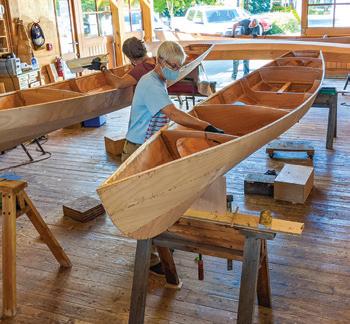


But you need it beneath you, as the wind lets you fly across the horizon, to beat the others across the finish line.
WarpSpeed® 3 SD will help you go even faster. When every ounce counts, from the core to the cover, pSpeed 3 SD with SamsonDry® Technology will prevent water absorption, keeping your ropes light and fast.


or Pleasure, AquaDrive will make your boat smoother, quieter and vibration free.

The AquaDrive system solves a problem nearly a century old; the fact that marine engines are installed on soft engine mounts and attached almost rigidly to the propeller shaft.

The very logic of AquaDrive is inescapable. An engine that is vibrating
on soft mounts needs total freedom of movement from its propshaft if noise and vibration are not to be transmitted to the hull. The AquaDrive provides just this freedom of movement. Tests proved that the AquaDrive with its softer engine mountings can reduce vibration by 95% and structure borne noise by 50% or more. For information, call Drivelines NW today.



It’s been a long time coming. For almost nine months Sea Lab has been sitting patiently on her trailer waiting for something to happen, quietly deteriorating as she sits… like idle boats do. You see, sometimes life gets in the way of being on the water, and this year held so many events and changes we just haven’t had the opportunity to get out. By July in a typical year, we would have collected a couple of weeks’ worth of days on the water and would be readying ourselves for a three-day weekend over the fourth, but not this year. We hadn’t been out since October.
I can’t remember a year we have not been on the water for Independence Day, so we made time. It almost seemed like too much trouble to go for one day since we both had work commitments the days before and after the holiday, but we put the blinders on and squeezed in prep time for the boat (quite a lot of it was needed after sitting so long). One of the things keeping us so busy is that we’ve moved, and our homeport is Grapeview now instead of Tacoma, and we were eager to explore our new home waters. We’ve cruised in Case Inlet before, but it’s different when it’s the place you’re from instead of the place you visit once in a while.
Our longtime friends Al and Sue joined us early, as we had to race to get Sea Lab launched at Latimer’s Landing just under the bridge to Harstine Island before the minus-3-foot low tide. After removing the tie-downs and making sure the plug was in, I was re-learning the launch process in my head while backing down the ramp. Sea Lab slipped the confines of her trailer with an almost audible sigh as she was finally reunited with the salty water of the Salish Sea. Al and Tekla caught her lines as I rolled back up the ramp and parked in the nearly empty lot. The motor had no hesitation at the touch of the key and we were away—
under the bridge southing down Pickering Passage, a route we could never do in our former sailboat, Moondance, as the mast was too tall.
by Dennis Bottemiller

We slowly motored along, enjoying the beautiful clear warm morning on the Fourth of July. There was not another boat in sight down the east side of Squaxin Island as we slid past the big fish pens and oyster beds that were being worked on during this morning’s very low tide. It felt so good to be on the water again.
We spotted a raft of larger boats anchored in the shallow bay at the south tip of Squaxin so we pulled in and shut the motor off to drift quietly. Al broke out some bratwursts left over from grilling the night before, crusty charred and cold—a real sailor’s breakfast, and we felt healthy and rejuvenated. We drifted into 6 feet of depth and decided to head back into deeper water.
As we cruised through the shallow waters at the southern end of Peal Passage, I retold the story of sailing our first boat Seashell, a Venture 17 swing keel, through this area early in our sailing careers. We were beating up the channel in a nice breeze, water flowing past the gunwale. We tacked a couple times before I looked down and noticed sand dollars on the bottom and realized we were aground and our tacks were merely pivots on the keel stuck in the mud. I can’t remember how many times we’ve laughed at that event.
Sea Lab entered Dana Passage, and we realized Boston Harbor was just across the way and would make a good stop, possibly the taps would be open for a nice cold lunch beverage. As we approached, we could see plenty of room on the guest dock, so we threw the fenders out and tied up. I noticed right away that the docks were all brand new. Having been here on my birthday just last August, I remembered the docks had been in pretty rough shape. Now they are beautiful. We hiked up the gangway made steep by the seriously low tide to the store and, sure enough, the taproom was open. We each got our favorite and went to claim a table on the landing overlooking the marina and beach. I just love the bustle of a marina during high season on a festive and beautiful day!
We made our way back to Sea Lab past the upper docks which, along with the boats tied to them, were sitting in the mud thanks to the extreme minus tide. The mood on the docks was celebratory and happy, conducive to many greetings and conversations. We shoved off waving to our new friends in the boat moored behind and made our way through the anchorage deciding along the way to run up to Joemma Beach State Park on Key Peninsula to see if anything was happening there. The water was glassy smooth, so I ran us up to 20 knots along the shore of Harstine Island and up Case Inlet. In the 20 minutes it took to get there, Alan commented it would take him half a day to get there in Kingfisher, his Ranger 29 sailboat. When we arrived at the park, I was surprised to see there were only three boats on the docks for this holiday weekend and wished we could be out overnight. Just try to go on a spontaneous camping trip in western Washington on a holiday weekend and see if you can get into a campground. On a boat, your chances are much better. It’s a piece of knowledge the lubbers don’t know.
I got a text message from our friends Rob and Tracy. They had just launched their boat the Blue Pearl and were wondering where we were, maybe we could rendezvous. They suggested Dutcher’s Cove just south of Vaughn Bay. The water is shallow there and it would be a good day for a swim, so we pointed that way. In keeping with the theme of the day, when we got to Dutcher’s Cove there was no one there. We planned to drop anchor and hang out until Rob and Tracy arrived, but when I pushed the windlass button nothing happened. Hmm… it

worked fine last time we were out in October. I always wonder what tiny physical event happens to cause things like that. Was it that one last molecule of corrosion somewhere in that system that developed in just the right place to cause a break in that circuit? Now was not the right time to search for answers, so we abandoned our plan for swimming and re-booted our course for Jarrell Cove and headed off. None of us had swimsuits anyway… Jarrell Cove State Park is a longtime favorite destination, and we moseyed our way across Case Inlet and the northern tip of Harstine Island into Pickering Passage. Once again, we arrived at a fabulous park and there was plenty of room to pull into the state park’s dock. After we tied up, I called Rob to alert him to our change of plans; they decided to see if they could get the buoy at Eagle Island State Park. We lamented the loss of a meet up on the water, but there will be other times. The four of us went up to the park for a walk in the trees and then back to Sea Lab for snacks and fizz waters, marveling at the day all the while.
We decided it was time to go and pulled the dock lines, then glided through the moored boats and paddleboarders and back into Pickering. Soon, the bridge where we launched was in sight and we readied to land. As we pulled up to the dock, I could see that now the tides were now at peak high, 17 feet higher than low that morning—the float was a long way from the ramp and the gangway was very high above. This was a problem I hadn’t encountered before. There’s always something new to learn! I ran up to the parking lot and got into the roasting hot truck and backed down the ramp. Then, with some spliced lines and thigh deep wading, we warped Sea Lab back to her trailer and hitched her up and I pulled up the ramp and out of the water.
We said our goodbyes and discussed plans for doing it again, and Al and Sue headed on their way while Tekla and I readied for the short drive home. On our way, I realized that all my anxiety and stress from the past months had drained away and I felt grateful for the boat and the body of water that has given us so much. I’m a lucky guy.
Dennis and Tekla and their Sailor dog Tim Tim have recently changed their home cruising waters from Tacoma to Case Inlet at Grapeview and are excited to explore the South Sound in greater detail.


by Marty McOmber
We moved carefully through the islets and jagged rocks that formed the channel into Walters Cove. Running aground in this remote corner on the northwest coast of Vancouver Island would be a disaster.
As raindrops dripped from the brims of our foulie hoods, we passed modest homes dotting the craggy shoreline, shrouded in a swirling mist. The air was dead still and we had yet to see anyone outside. The sturdy government pier, built to service commercial fishing vessels, emerged into view, its linear dock mostly vacant. We dug deep in a lazarette for the fenders and mooring lines that had sat unused during our recent nights at anchor.
The conjoined communities of Kyuquot Village and Fair Harbour, home to several hundred people, are a remote outpost of hardscrabble modernity in these parts. But for us, it felt like a welcoming metropolis.
By this point in our 2022 circumnavigation of the great island, we had hopscotched our Passport 40 sailboat, Rounder, through the Gulf Islands, Desolation Sound and the Broughtons. As we headed farther north, traffic on the water dwindled and any concerns about finding space in good anchorages disappeared—there was always enough room to swing.
We had weathered the dangers of Cape Scott and the Brooks Peninsula, then spent several days at anchor nestled in a cove in the Bunsby Islands, a peaceful place shaped by the caprices of nature over centuries. Alone, remote and wonderful. But now, we were ready to enjoy the company of people.
CRUISING ON AND OFF THE BEATEN PATH HAS ITS REWARDS
For some cruising boaters, the goal is to get away from it all. To be the only boat in a remote anchorage. To feel alone, finally, and find peace in this bustling world. For others, it is the lure of waterfront towns and cities that call to them. Those cruisers love to discover new communities,
explore attractions and enjoy local watering holes and restaurants.
For Deborah and me—and I suspect a lot of other cruising boaters—we like to balance both.
For the past 20 years, we’ve sailed the Salish Sea, our cruising grounds growing along with our boats and our confidence. Those trips have almost always been shaped by a desire to experience both the wonders of nature and the amenities and local culture of towns.
Walters Cove provided just the kind of comfort we had been craving. We discovered a place that felt both familiar and welcoming, but also unlike anywhere else we’d been. Kyuquot Village is a First Nations settlement of about 300 people. Fair Harbour, on the other side of the cove, has a few homes and a rustic fishing resort along the shore, and an inn with cabins and a cafe in an old building overlooking the water. Accessed by a path through the woods, the cafe doubles as a community gathering space that offers a slow but welcome public WiFi connection to the outside world.
After securing our boat to the wharf, we trudged up the steep ramp in our sodden foulies to the small store/post office/harbormaster office. We were told to make ourselves at home and that we were welcome to moor at the government dock for a few nights. We were in luck, since one of the handful of old freighters that make regular calls to the scattered communities in Barkley, Nootka, and Kyuquot sounds had just departed and left a fresh delivery of fruits, vegetables, and other groceries.
We only grabbed a head of lettuce, a bag of cherries, and some half and half, recognizing that these foodstuffs were meant for the local population, not waterborne travelers with fridges of provisions aboard.
Years earlier, the first time I took Deborah on an overnight cruise, we visited Blake Island in central Puget Sound. Though the downtown Seattle skyline was clearly visible from the beach, the island made it feel like we were somewhere much farther from home. With the city glimmering just
across the water and miles of forested trails to explore on a tranquil island reachable only by boat, it felt like the best of both worlds.
Since then, over cruises that have taken us from Olympia to Southeast Alaska, some of our best moments aboard have been in isolated anchorages. Swinging on the hook, watching wildlife swimming and flying around us as the summer sun slowly sets, is infinitely more entertaining and engaging than any film or TV show.

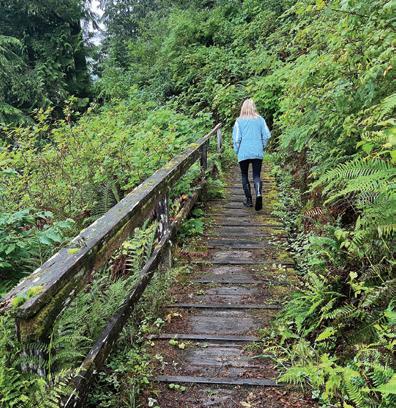
Early in our cruising couple life, we left our home base in Seattle to sail for the distant shores of… Tacoma. We probably never would have spent a weekend in Tacoma if we were traveling by car. But by boat, Tacoma was a delight. We had a blast visiting museums, walking through the downtown core and enjoying a few pints at a local pub.
When we headed off at the end of the long weekend, I commented that almost any town is a charming seaside village if you arrive by boat. I was half-joking, but that observation has proven true over
many other stops through the years. This summer we are staying closer to home, departing in late June for a meandering cruise through the San Juans and southern B.C. Friday Harbor was an ideal place to spend my birthday visiting with friends and celebrating with great food and drinks. A few days later, the Fourth of July fireworks at Roche Harbor, where we rafted up with five other boats for the festivities, were outstanding.
But when we broke up our floating island of friends on July 5th, we were definitely ready to downshift and recover from the revelries. So we pointed the bow south to Garrison Bay, where we settled in for three peaceful days at anchor, enjoying trips ashore each day to hike through the national park and nearby trail system.
We plan to continue that balance between bustle and quiet, between communing with nature and kicking back in a fun town, for the next few weeks. The ability to enjoy both is, for us, what makes all the work and expense of owning a boat in the Pacific Northwest worthwhile. These are some of the best cruising grounds in the world, in part because nature and communities are so tightly intertwined.
By the time we were ready to leave Walters Cove, the rain had lifted and the mist had cleared. The taste of a delicious sandwich at the cafe still lingering in our mouths, we shoved off from the government dock, stowed the lines and fenders back in the lazarette, and picked our way back through the channel into the rolling seas of the island’s west coast. We’d met some friendly and interesting people, enjoyed a meal not cooked on the boat, and got a taste of daily life in a small and unique community.
Now we were bound for Nootka Sound and the chance, once again, to be on our own, alone, in this remote and wonderful corner of the world.
Marty McOmber is a Pacific Northwest sailor, writer, and strategic communications professional. He is currently working on refitting and improving his 1984 Passport 40, Rounder, for continued cruising adventures near and far.


Tby Michael Boyd
he Canadian Gulf Islands are just across the border from the San Juans and are similar in many respects—in the large number of beautiful islands, the vast array of marine parks, and the wealth of opportunities for boaters, including hiking. In spite of the similarities, we find the hikes to be at least as varied as those in the San Juans. The cruising in the Gulf Islands is a lot like paradise, especially at this time of the year, and the quality and number of available hikes takes it to another level.
Often, we cross the border and clear Canadian customs at the Port of Sidney. We find this little community perfect for stocking our larder from the supermarket only a block away and, once chores are done, we take a nice long walk along its beautiful waterfront park, ending with a relaxing coffee break in town. Sometimes there’s even a concert in the band shell. It’s one of the best “city” walks we know.
Across from the Port of Sidney is Sidney Spit Marine Park on the northern tip of Sidney Island. There is a dock for dinghies and smaller boats, and many mooring buoys set along the shoreline. We prefer to anchor, as there are modest depths over a good sand bottom. But the bottom isn’t flat; there are shallow areas that must be avoided, so we spend some time with the chartplotter and depth sounder to find the best place to drop the hook where you won’t run aground or hit another boat. And during prime boating season, especially on weekends, there are boats, lots of

them. Perhaps half are just there for the day but their wakes seem to last until nightfall. So for maximum comfort, we like to visit on a weekday, early or late in the season.
We love to hike this park because of the variety of terrain encountered, partly in pine forest, partly in dunes and partly on sandy beaches. Hiking out to the navigation beacon on the end of the spit should be done only on lower tides since the middle of the spit is under water on high tides. It’s a 2-mile round trip from the dock. A longer hike goes through the pine forest campground and around the salt marsh to the dunes on the west side, perhaps 5 miles round trip. None of the hikes are particularly difficult but, because much of the time you are hiking in sand, they can be strenuous. We try to get back to the boat in plenty of time to relax and enjoy the spectacular sunset and twinkling lights of Sidney, provided we can manage to stay up that late.
On the east side of Saanich Inlet, a bit over half way down is tiny Tod Inlet. This compact, totally landlocked inlet is best known as the boater’s gateway to Butchart Gardens, but there are other attractions as well. Anchoring is easy in the shallow inlet but it can be very crowded during high season. Luckily, short scope is not a problem in this super protected anchorage with a sticky mud bottom.
From the dinghy dock, a trail leads southeast along a creek until it comes to a road. Along the way, there are opportunities to cross the creek and hike the many trails of Gowlland Tod Provincial Park. For a different type of experience, walk east from the dinghy dock to the road and continue past Butchart Gardens on Benvenuto Avenue to a major intersection at West Saanich Road. There you’ll find the Victoria Butterfly Gardens where you will be able to roam a tropical setting filled with butterflies and tropical birds. It’s about 3 miles round trip of road walking, but well worth it for a unique experience. As an obvious alternative, a meandering stroll through Butchart Gardens never disappoints, either.
Portland Island is a marine park with two fairly small anchorages each with a dinghy dock but no mooring buoys. Instead, they have a number of stern tie rings, a common feature in Gulf Islands marine parks that isn’t present in the San Juans. The stern tie ring is usually a large steel ring on the end of a length of chain that is securely fastened to a rock or cliff along the shoreline above the



high tide line. It is used to tie the stern of your boat once you have dropped anchor. We find them a mixed blessing; they are very secure once established but setting one up takes time and some precision and can be especially difficult from our rowing dinghy when a wind is blowing. We have definitely seen some boaters do it in a way that appears to be routine but I can’t say we get enough practice to become truly proficient.
At Portland Island, we prefer intimate Royal Cove on the northwest side even though it is subject to wakes from passing ferries. After setting our anchor and establishing our stern tie, it’s time for a hike. The perimeter trail goes around the outside of the island, intersecting with spur trails along the way that either go into the island interior or out to a water’s edge. Once, when entering a grassy meadow we surprised a turkey vulture at a carcass; both of us were shocked. A stop by Princess Bay, the other anchorage on the southeast side, provides a view of the other boats at the island and, perhaps, an opportunity to meet other boaters. The perimeter trail is about 5 miles of up and down and isn’t difficult.

Wallace Island lies between the northern tip of Salt Spring Island and Galiano Island and is another marine park with stern tie rings. Conover Cove is small, with a dock for smaller boats and room for three or four boats to stern tie. The entrance is very shallow; we touched bottom there once when leaving the cove. Princess Cove is much larger with numerous stern rings. It is well protected from southerlies; we were stern tied here once when southerly winds reached 30 knots outside the cove and we were perfectly comfortable. We have anchored without a stern tie northwest of the cove entrance and been quite comfortable in normal summer weather, especially since the wind usually falls to light overnight.
Wallace is a long, narrow island with trails running its entire length and out every peninsula. The longest goes out to the northern tip of the island at Chivers Point where there is a camping area for kayakers. The point opens onto a narrow passage between islands with strong currents and a drying rock in the middle; we like waiting to see if any larger boats will attempt it. Some do, though we wouldn’t dare. The trail is about 5 miles round trip from the Princess Cove dinghy dock.

When we are here longer, or just feel more energetic we also head the other direction. Near Conover Cove there is an old cabin where boaters put up boards decorated with their boat name. The boards cover the walls inside and out. It's fun to look for boats you know.
Another trail goes to the southern tip of the island at Panther Point, overlooking Trincomali Channel. Someone has kindly placed a small Buddhist shrine there to spread good karma to all Gulf Island boaters. With all the good hiking, Wallace Island is a welcome stop on almost every trip.
Michael and Karen have been cruising the Salish Sea and beyond for more than 20 years, hiking every chance they get. For more resources for hikers visit their website at https://mvmischief.com/library/
For additional hiking information in this area Michael and Karen also recommend: “Hiking the Gulf Islands of British Columbia” by Charles Kahn.













by Lisa Mighetto

The same features that attract boaters to the San Juans today— secluded coves, hidden inlets, and lush forests—once made these islands irresistible to smugglers. A century ago, the scenic anchorages of Sucia, the pastoral light station at Stuart Island, and other now-popular cruising destinations set the scene for illegal activities encouraged by a close international border and fast getaway vessels. In the late nineteenth century, contraband included woolens, silks, and opium, all of which could be snuck in duty-free from Canada by boat. People, too, were smuggled after an exclusion act banned Chinese laborers from
entering the United States in 1882.
When the National Prohibition Act outlawed the sale of alcoholic beverages in 1920, bootleggers recognized an opportunity for easy profit by smuggling in whiskey and other spirits from British Columbia, where these products were legal. Prohibition lasted until 1933, ushering in an era of remarkable excess and lawlessness, while fueling innovation and ingenuity in boat design and marine technology. During the heyday of the 1920s, the “rum runners” operating in the waters around the San Juan Islands “had the world in the palm of their hands,” recalled the son of a local bootlegger.
(Top) Fleet of new Coast Guard “Six-Bitters” (75-foot patrol boats with wooden hulls) at Port Townsend. Photo courtesy of US Coast Guard.
Turn Point Light Station, Stuart Island, where the ill-fated rum runner Beryl G drifted in 1924.

Generally speaking, the United States had always been a nation of drinkers [see, for example, William J. Rorabaugh’s The Alcoholic Republic: An American Tradition, 1979]. One ad from 1906 showed a girl sharing a beer with her grandpa, suggesting that drinking locally brewed Rainier Beer was a family affair, benefiting children and the elderly alike. Consumption of alcohol soared in the early twentieth century, with some estimates claiming that Americans drank three times what they do today. Attempting to stop this trend, temperance groups such as the Anti-Saloon League waged an effective campaign against “demon rum,” a generic term that applied to all liquor, resulting in the passage of a series of state dry laws and eventually in a national ban.
Advocates pushed Prohibition as a “Noble Experiment” that would strengthen family life mostly by restricting access to drinking establishments and the sale of booze. “The saloon is the most fiendish, corrupt, hell-soaked institution that ever crawled out of the slime of the eternal pit,” preached Reverend Mark Matthews, pastor of Seattle’s First Presbyterian Church. “It is the open sore of this land.” Some historians now view the temperance movement and dry laws as a way to clamp down on the working class, who, it was feared, might lose productivity if laborers spent too much time in saloons, and on immigrants whose culture and heritage sometimes promoted consumption of alcohol (German beer halls, for instance).
Temperance campaigns targeted cities like Seattle, which had flourished after
Cruising past the Turn Point Light Station on Stuart Island today is an invitation to remember this region's wild and sometimes grim history during Prohibition.

the Klondike Gold Rush of 1897-1898. Rapid growth and prosperity during the early twentieth century brought taverns, cigar stores, dancing halls, and gambling parlors to the downtown area, particularly south of Yesler Way. A 500room brothel, reported to be the world’s largest, stood on Beacon Hill, the result of shady permitting allowed by the mayor and city officials.
Washington became a dry state in 1916, and the national ban on alcohol several years later was more restrictive— at least on paper. Yet enforcement proved difficult, as measures were underfunded and Washington residents quickly became disenchanted with the new law in 1920. Many Americans who supported the national ban did not realize that beer would be included. Prohibition did not stop the sale and consumption of liquor; it simply drove it underground. And Seattle was a robust market. Speakeasies requiring secret passwords for entrance seemed to emerge on every corner, replacing the old watering holes and offering drink, dancing, and jazz. The Club Royale in Seattle, which required a special membership card for entry, served its boisterous customers their illegal beer in cups so enormous it became known fondly as the “Bucket of Blood.”
The demand for alcohol in the cities of Puget Sound could not have been met were it not for the rum runners that brought the contraband south from B.C. With nicknames like Legitimate Pete, Uncle Slug, and Pirate Jack, these
bootlegging entrepreneurs quickly figured out how to supply thirsty customers while turning enormous profits. The proximity of the Canadian border made for swift over-water transport, and small, fast rum-running vessels escaped detection by speeding at night and weaving through islands, sometimes during stormy weather. They picked up their illicit cargo at B.C. ports or by visiting larger “mother ships” anchored outside the US boundary.
The sparsely populated San Juan Islands with their hidden shorelines provided ideal cover for boats engaged in this activity. Sucia Island, for instance, was a popular drop off point for bottles of illegal booze, which were packed into burlap sacks for transport. Rum runners typically stowed these sacks below in hidden compartments, and sometimes they towed them from the stern, where they could easily be cut adrift if their boat was stopped.
Roy Olmstead, a former Seattle police officer and leading bootlegger, regularly sent his speedboat Zambesie to Haro Strait to collect Canadian liquor at D’Arcy, the southernmost of the Gulf Islands, located west of San Juan Island. This pickup spot was strategic, as D’Arcy was not only surrounded by reefs but also served as a colony for Chinese immigrants afflicted with leprosy, which rarely received visitors or much public scrutiny. Once loaded, the contraband made its way to various distribution points on Puget Sound.
So successful was Olmstead’s smuggling operation that it was said he made more profit in one week than he could have earned in 20 years on

the Seattle Police Force. He employed a staggering assortment of people, including boat captains, crews, truck drivers, accountants, and lawyers. He paid off city council members, Mayor Doc Brown, and a large portion of the Seattle Police Department, as his years on the force helped him identify who to approach. Olmstead’s wife Elise (sometimes called “Elsie”) allegedly helped his smuggling business on a radio program, where she was known as “Aunt Vivian.” While reading stories to children, she reportedly sent messages in secret code to Olmstead’s boats as they sought to make deliveries.
Olmstead took pride in the quality of his liquor and counted the Rainier Club, Arctic Club, and aviation pioneer William E. Boeing among his customers, earning him the nickname the “gentleman bootlegger.” A beloved figure, he was also called the “good bootlegger” owing to his refusal to resort to violence even when confronted by hijackers. Olmstead avoided drug trafficking, prostitution, and other illegal activities sometimes associated with bootlegging. Prohibition was unpopular, and Olmstead and many who worked for him believed they were performing a useful, even respectable service.
For all the adventure and glamor, rum running could be dangerous. In 1924, for instance, Chris Waters, the keeper of the Turn Point Light Station on Stuart Island, spotted a boat drifting in Haro Strait. Boarding the vessel, he discovered that the doors and hatches were covered in blood, while multiple bullet holes suggested a struggle. No one was on board but a cap filled with blood
Rum Running vessel showing gunshot damage. Smugglers faced gunfire from hijackers and Coast Guard patrols. Photo courtesy of US Coast Guard.

confirmed that the crew of the Beryl G had met a gruesome fate. Canadian authorities joined the US Coast Guard in investigating the boat, which had a B.C. registry. Piecing together the evidence, they learned that the owner and his son had been doing business with Tacoma rum runners, who murdered them, ripping open their bodies with a butcher knife so that they would not float. The culprits had hijacked the boat to steal the sacks of liquor on board. Two years later, two of them were hanged in Canada. “The Beryl G murders put the whole rum running trade on edge,” noted historian Rick James [Don’t Ever Tell Nobody Nothin’ No How: The Real Story of West Coast Rum Running, 2018].

benefits.
The vessels used in rum running evolved over time. While large boats could transport more cargo, speed and the ability to out-maneuver pursuers, including hijackers and the Coast Guard (charged with enforcing Prohibition on the seas) were highly desirable. Boeing Aircraft influenced the design of fast boats by finding a new use for the light-weight engines once used in combat planes during World War I. Faced with a surplus of these V-12 motors, the company incorporated them into a new line of square-bowed vessels with inverted hulls called “sea sleds” that sold out quickly in the early 1920s. The 12-cylinder aircraft engines were advertised for purchase in local newspapers and boating magazines. Using two of them allowed some boats to approach 40-knot speeds, even when carrying a full load. Boatyards in Vancouver, Victoria, and Seattle filled the growing demand for low-hulled speed boats, while at the same time building the Coast Guard patrol vessels that would pursue them.
During the years of Prohibition, the Coast Guard experienced the largest peacetime fleet expansion in its history. The service sometimes repurposed the rum running boats it seized, using them to pursue smugglers. But its larger vessels were not ideal for chasing and apprehending speed boats. Accordingly, Congress appropriated funds for a new fleet of small boats and an increase in personnel, designed to intercept the rum running trade. During the mid-1920s, a fleet of 75-foot wooden patrol boats were built. Nicknamed “Six-Bitters,” which
This rum running boat was repurposed after seizure by the Coast Guard. Photo courtesy of US Coast Guard.

meant 75 cents, they were equipped with a 1-pounder cannon and other small arms, and could reach speeds of 15 knots. The Puget Sound Naval Shipyard in Bremerton similarly built 36-foot patrol boats capable of speeds up to 25 knots for the Coast Guard.
Coast Guard patrols were further aided by developments in radio communication. During Prohibition, the radio direction finder (RDF) helped detect lines of bearing on transmissions from mother ships and speed boats. At the same time, rum runners could use RDF to locate the Coast Guard as well. “It was a huge game of cat and mouse,” wrote one Coast Guard source [William H. Thiesen, “The Long Blue Line: Catching the Rumrunners—Coast Guard Adopts New Technology during Prohibition,” 2021].
Coast Guard chases sometimes erupted in gunfire, requiring smugglers to repair bullet holes in their boats. Civilians, too, were drawn into the drama. “Many waterfront residents were jolted awake during that era by the howl of high-powered engines,” John Lund commented, “the peace shattered by cannon fire and the darkness ripped by Coast Guard machine gun tracers and searchlights aiming to uphold the law” [“Rumrunners,” Northwest Yachting 1991].
In 1933, the 21st amendment repealed Prohibition. No longer profitable, rum running shut down for the most part, signaling the end of an era. “The great parties, the adventure, the big money … these were gone,” observed historian
Norman H. Clark [“Roy Olmstead: A Rum Running King on Puget Sound,” Pacific Northwest Quarterly, 1963].
While the long-term effect of Prohibition on America’s drinking habits is open to debate, the impact on boat design and marine technology is clear. The Coast Guard was better able to meet the challenges of World War II with its advanced fleet of ships and increase in personnel. The growing market in small, fast recreational vessels benefitted from the design of speedsters during Prohibition, and multiple observers claim that hydroplanes evolved from the boats equipped with airplane engines [see, for example, Brad Holden, “Prohibition in the Puget Sound Region (1916-1933),” History Link, 2019].
Today, those cruising in the San Juan Islands can explore the locations important to the rum running trade a century ago. Sucia, for example, offers
mooring buoys in multiple bays and coves where illegal booze was once packed into burlap sacks. The light station still stands on Turn Point, where the Stuart Island keeper spotted the ill-fated Beryl G drifting in Haro Strait. Rumors of old rum running boats deteriorating on the shores of San Juan Island persist. D’Arcy Island, located west of San Juan Island, has two new mooring buoys at the site where Olmstead once ran his bootlegging operation. Rum Island and other place names further evoke the smuggling trade, reminding boaters of a time when noble ideals clashed with repressive measures, and a national dilemma played out in our region’s waters.
Lisa Mighetto is a historian and sailor residing in Seattle. She is grateful to the Coast Guard Museum Northwest for providing documents and images.

“Mother ships” waited in international waters for rum runners to pick up liquor for transporting south to the cities of Puget Sound. Photo courtesy of US Coast Guard.

by Andy Cross
Over the years of cruising with our children, I’ve had a number of people contact me for advice about starting out cruising as a family, especially in the Pacific Northwest. I’m happy to oblige and provide relevant information when I can, though I always stress that no two situations are alike. What has worked for our family aboard our Grand Soleil 39, Yahtzee —and continues to work many years and miles later—might not be the perfect solution for others. And that’s okay. One of the great things about cruising, and boating in general, is that there are so many ways to get out and enjoy time together as a family. However different the specifics of technique, location, or approach, the promise of shared experience and of engagement with the natural world alongside our kids is certainly a worthwhile goal.
While we love being asked for and offering advice, we’ve also been fortunate to share the experience with other families while cruising in Washington, British Columbia, Alaska, and beyond. In doing so, we’ve learned a lot about what makes a simple weekend trip to a favorite cove exceed expectations, and we picked up some best practices for venturing off to distant shores. With the hope of inspiring other families to take the leap into cruising near and far just as we have, here are some tips to help send you on your way.
The reality of cruising is that everyone out here has a varied set of goals and plans, and a different way of making them work. No particular set of plans is right or wrong or good or bad, they’re just different. That’s what can make living and cruising on a sailboat so amazing. And it doesn’t matter where in the world you are. For new or less experienced cruisers, my one piece of advice is always: Don’t over plan. While grandiose
plans and dreams are important, the actual execution of those plans is going to start off in small bites. No matter where you are, just get out and start sailing and let the wider plans come later.
Whether it’s for a weekend, a week, or longer, it’s also important to understand that cruising takes time and can be frustrating when boat problems or weather issues cause delays or changes. It’s imperative to be able to adapt on the fly and to be okay with uncertainty. Our family has learned many times over that no matter how much we plan in advance and look towards what we want to happen, there will always be modifications made along the way.
When you get out there, don’t try to do too much too fast. Sometimes, the best part of cruising is when nothing of great significance really happens. Maybe it’s taking a little longer to prepare and enjoy breakfast in the morning before pulling the anchor and heading out to your next port or anchorage. Or

maybe it’s lazily sailing at a knot or two before finally turning the engine on. It can even be lingering a little longer at a state park beach, simply watching your kids throw rocks in the water or play in a tide pool. And I can’t begin to count the times when we’ve stopped in an anchorage for “just one night” and then we’re still there nearly a week later. It happens so frequently we even have a family name for it—“One Week Cove.”
Those moments, the ones that seem to slow down and stand still, can be the most rewarding parts of spending time on a boat with your family. When it’s that good, it feels great to amend previously planned parts of the itinerary. Take time to enjoy life and the places you’re in, and see what happens next. Your plans will evolve from there.
Hand in hand with not overplanning, it’s important to embrace spontaneity. When living aboard in Seward, Alaska, I remember a Friday afternoon when non-live aboard friends came down to their boat and, even though they’d planned to do boat projects all weekend, on a whim we all decided to chuck our plans and head out to a favorite anchorage to raft up for the weekend. A flurry of toppingup on food and preparing boats ensued and, just hours later, the adults were enjoying sundowners in the cockpit while our kids played together on the foredeck, all in the setting of a beautifully mountainlined Alaskan fjord. It couldn’t get much better.
Being spontaneous can fly in the face of having a good plan, but spontaneity when cruising can bring some of the most cherished memories you’ll make as a family and with friends. And good planning actually facilitates the ability for a well prepared boat and crew to pivot quickly, set previous plans aside, and move forward in a different direction.

Cruising
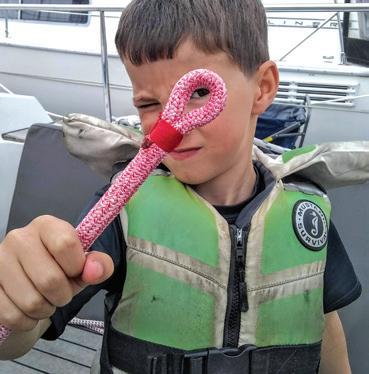
families. These connections started small at first, like meeting others on the dock at Shilshole Bay Marina who were also new to boat ownership and expecting a baby. Happy hours turned into dinners and, before we knew it, we were helping each other with boat projects, sharing anchorages throughout Puget Sound and the San Juan Islands and then, years later, cruising together in Mexico and Central America. As families on the water, sharing the ups and downs of the cruising life is extremely beneficial. Yes, it’s important for our children to have peers to play with, too, but we’ve found that it’s equally essential for adults to have friendships that are forged over our shared experiences. Being able to help each other along the way and to commiserate through boat projects gone awry, homeschooling, weather analysis and routing, or even to ruminate about upcoming destinations over a cup of coffee is incredibly valuable. We also learn an immense amount from each other on a broad range of topics, boat related or not.
We’ve been fortunate to cruise for days, weeks, months, and even a couple years at a time with a variety of other cruising

Most of the family cruising friends we’ve made along the way have been chance meetings that have led to quick connections and then long and lasting friendships. Other times, we’ve been introduced through other friends and the web of families grows organically. My best advice is to be approachable and to simply say “yes” when you can. Take up that invitation to join another family for a beach outing, make it a point to strike up a conversation as you pass by on the dock, dinghy over to say hello after a family has dropped their hook, and be willing to help another family out in a pinch.
Along with other sailors that we’ve clicked with along the way, one of the very best parts of traveling by sailboat as a family is meeting non-sailors in the places that we visit. Exposure to the overall human experience in a wide-range of locales, socioeconomic conditions, and cultural backgrounds is enriching in ways that have surpassed our expectations. In every place our family has spent time by boat, we’ve found some form of immense generosity and genuine bond that makes us miss it truly because of the people. You never know who you might meet by just saying yes.


Yahtzee and a buddy boat sail in tandem to their next anchorage.
No matter how many friends and fellow cruisers you have around you, there will be times when you’re pretty much alone. That’s where the importance of teamwork and connection as a family is key and, as with any good team, everyone should have a role. If they are old enough, I always encourage people to get their kids involved in the planning and running of the boat.
Children don’t necessarily need to know the minutiae of navigation or exactingly proper sail trim, but involving them in the many stages of cruising can be highly beneficial and rewarding. Look at charts together so they get a sense of place and what destinations you might stop at. Then, when you’re out cruising, show them where you’re going and how you’ll get there. Remind them that their participation is part of what makes this possible, more successful, and enjoyable. What forms of travel are as uniquely shared and collaborative as is the case among a boat crew?
In the planning stages, you can also ask them what things they’d like to do off the boat—hiking, beach combing, walking through quaint towns, bowling, going out for ice cream, and visiting libraries or museums have all been things that our family has enjoyed together. As with rudimentary route planning, you can also involve them in planning things like meals and what you’ll have aboard for entertainment. Work together on setting up a meal plan for breakfasts, lunches, dinners, and snacks. And deciding what games, toys, and books you’ll have aboard can be a two way street. The more everyone is included, the more you’re all likely to gain from the experience.

When it comes time to have your kids more involved in sailing, getting them off your boat and onto others is extremely valuable. Growing up on a 40-foot boat is one thing but, in our view, actually learning the fundamentals of sailing needs to start on a small boat and then work up from there. As our boys have gotten older, we’ve increasingly encouraged them to join junior sailing programs when available because there are multiple layers of benefit.
Junior sailing has presented a great opportunity for them to cultivate a love for the water outside of their parents and their home, to take instruction from other people, to spend time with their peers, and to be in charge of their own boat. Learning everything from knots and rigging to right of way rules, points of sail, safety, and about the wind and waves, it’s incredible how much it translates when they come back home.
Now 9 and 11 years old, our boys have taken junior sailing classes in the U.S., Colombia, and the Virgin Islands and, after every session, they return to Yahtzee with new tools in their budding seamanship bags. There’s almost nothing more rewarding for us as parents than watching them steer our boat close hauled, help with anchoring and docking, and head out alone in our dinghy.
It almost goes without saying that there will be times when things do not go well. Unexpected things happen, there will be frustrating moments and times when you ask yourself,

“Why are we doing this to ourselves?” Fortunately, those occasions will be fleeting and they’ll be opportunities for growth. We’ve learned many times over from mistakes made and near misses, and each time there are takeaways that have ultimately led to our success as a cruising family. Yet we’re still learning.
The hardest part of the whole endeavor to set out as a family on a sailboat is simply going. Casting off the dock lines and pulling out past the breakwater with the whole family can be tough, but it gets easier with time and someday you may be ready to cut those dock lines instead of just untying them for a short local jaunt. Whether you’re setting off for a weekend or for years at a time, managing expectations, remaining positive, and being willing to adapt, change, and learn as you go will be among your biggest challenges; but when you do so as a family, the rewards are endless. I wish you well on your family’s journeys into sailing and cruising. Hope to see you out here!




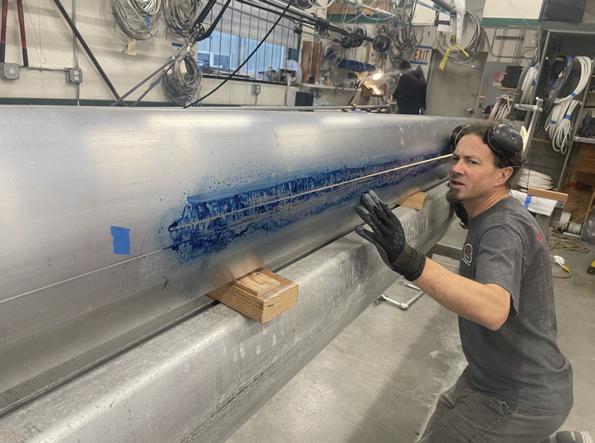



by Joe Grez
Solar boating is an interesting combination of powerboating and sailing, but I think it has more in common with sailing… when there’s wind, at least. While it shares the comfort, lack of exertion, and simplicity of powerboating, a solar boat’s tank is refueled for free by the gas dock in the sky every day. While power boaters generally appreciate higher speeds, solar boaters experience speeds similar to a sailboat. Accordingly, sailors are more accustomed to aligning departures and routes with the tides and winds, which is similarly advised for a solar sailor. Sailors like using free energy from nature in real-time, and they especially appreciate a lack of exhaust and combustion noise, which are also benefits of solar boats. That gives you
a general idea of what solar boating is all about, except for one more key point: when it’s dark, a solar boat is just an electric boat with range limitations, but as long as there is daylight—even if overcast and raining—you cannot be stranded with a solar boat.
Over the past decade, several new custom solar boats have been designed and built by local innovators. The cool thing about innovators is that they test new tech and report the results to the greater population. It’s a risky business because sometimes new ideas just don’t work; but either way, innovators separate fluff from substance for the rest of us. It’s safe to say, based on the performance reported thus far, that solar boating can appeal to, and meet the needs of, at least one segment of boating especially in the Pacific Northwest—long distance remote coastal cruising.
Having built my career in electronic product development, I installed my first electric marine motor about two decades ago, motivated to help my infant daughter avoid carbon monoxide fumes on our boat. It launched a new vocational passion, and I’m now the owner of a Pacific Northwest based manufacturer of small, electric outboard motors.
Thanks to this background, in 2014, I started providing custom electric racing motors to high school solar boat racing teams in California. One of these teams competed in the first international offshore solar regatta in Monaco, and I got to see the performance of advanced foil-borne solar racing boats up close. My first impression was that solar racing boats, while beautiful and graceful, are simply slow when compared to their high octane sisters. Solar boat racing is a safe and accessible class racing event, but solar racing boats will not compete in the unlimited hydro races any time soon. There may be some advantages for solar lake boats with no dockside recharging infrastructure, and a solar kicker would be ideal for salmon trolling. But when you add it up, the most exciting application for solar boating belongs to coastal cruising.
Anybody who’s cruised a sailboat in the Pacific Northwest in July and August knows that the auxiliary tends to get more use than the spinnaker.

You will end your cruise with a tan, to say the least. If you are a displacement power cruiser, you know that fuel is up-charged at the gas dock and, when traveling remote, gas docks are far apart. Clogged fuel filters and engine problems are always a worry, and who likes the plume of diesel smoke covering an anchorage while you just want to enjoy a quiet cup of coffee as the sun rises. In contrast, solar boating is clean, quiet, and remarkably reliable electric boating (fewer moving parts to require maintenance and lubrication, known as a solid state system), but with an added daily refueling capability that works literally anywhere on the planet. To top it off, even in less-than-sunny conditions,
summertime cruising speeds are still reasonable with solar.
In 2018, I completed my first solar performance modeling spreadsheet based on NOAA’s solar incidence model. This modeling tool provides a prediction for all-day cruising speeds and daily ranges in any location worldwide, under various sky conditions, and with any combination of boat hull resistance, battery, motor, and solar array sizing. This solar performance modeling tool shows that a welldesigned solar propulsion system can provide performance that is in the neighborhood of combustion propulsion for long-distance displacement cruising applications on boats under 45 feet long.

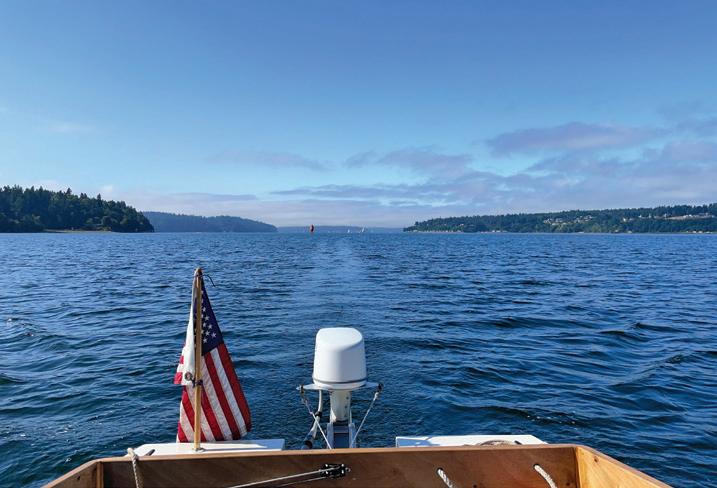
I used this tool when I configured Swe Pea—originally a hot-molded I-14 sailboat hull with a rotten transom— as a solar sailing boat. Swe Pea was finished just in time for the first 100-mile Salish 100 cruise from Olympia to Port Townsend in 2019. The setup was simple, with a standard EP Carry outboard with its 6-pound lithium battery, two 100watt solar panels, and a solar charge controller. Without solar, Swe Pea’s range on her battery is only 6 nautical miles. But with solar, Swe Pea completed the full course, maintaining pace with the other wind and gas powered boats in the same size range, without ever recharging from the grid.
Actually, Swe Pea had more to give. So mid-trip, Swe Pea and I split from the pack for a 28-mile jaunt starting from Blake Island, through Rich Passage and Sinclair Inlet to the Port Orchard public dock for lunch, and then behind Bainbridge Island through Agate Pass and up to Kingston. The conditions were variable that day—intermittent sun and clouds early on, then from Agate Pass northward, thunderstorms, headwinds, and opposing tides. While I was a little worried about lightning on the water, I was never worried about range. It was a joy to visit the Port Orchard dock that, though in disrepair, still brought back memories of fishing and goofing around when I was a kid. And doing it using solar provided a quiet, restful trip (until the
thunderstorm). I remember hearing the cavitation of the ferry prop through my hull in Rich Passage. I was alerted to seals and dolphins by the sound of their breath and jumping salmon by the sound of their takeoff. A seagull landed on the bow to say hi and didn’t leave a calling card. I was also pleased to verify on that trip that a balanced solar propulsion system can indeed eliminate the range-anxiety that plagues pure electric craft.
By now, I’ve collected data on several other small and larger solar boats including my own Sunnyside, 14foot, 1,000-pound camp cruiser that I converted from a C-Lark sailboat hull. Sunnyside has a proven daily range of up to 40 nautical miles on a sunny day and 30 miles on an overcast day. Note: cloudy skies reduce solar generation to roughly 25% of the sunny potential; but on Sunnyside, reducing power output from full-on to one-quarter of the power consumption reduces actual speed only from 4.2 knots to 3 knots.
Two other local solar boats—Wayward Sun and Electric Philosophy—are Devlin design-builds with power systems specified by their owners, each with performance as impressive as their stories. Wayward Sun is a 27-foot monohull originally designed as a day boat, but was the first solar boat to travel the length of the Inside Passage. This historic trip is made more remarkable
when considering that pandemic restrictions forbade her crew from stepping foot on Canadian soil. Wayward Sun’s performance is comparable to many combustion-powered displacement boats, particularly smaller cruising sailboats, with a top speed of 6.5 knots and a solar cruising speed of 4.5-5 knots. Overcast conditions prevailed during the trip, but she still accomplished the cruise on schedule.
Electric Philosophy, which was featured in the November 2021 issue of 48° North, is a 40-foot catamaran that can recharge faster from her expansive solar array than from mains at the dock. Her leisurely cruise speed is 6 knots but she can also cruise faster depending on the mood of her crew. Since first launching in 2021, she has traveled thousands of nautical miles, including a round trip to Alaska. At the time Editor Joe Cline stepped aboard for a ride with Electric Philosophy owners Ed and Eileen Pauley, they had been cruising for three months without plugging into shore power. And of course, they had no need to stop to refuel.
Wayward Sun and Sunnyside were designed with minimal battery capacity, requiring their skippers to leverage realtime solar power throughout the day. This is the budget approach, because batteries are expensive. However, I actually enjoy the process of adjusting power flow to the motor to match the power provided by the sun; increasing by morning to 100% throttle mid-day, and then slowing towards evening again. This method is not for everyone, but this is how you can maintain a 100% state of charge in the battery at all times. Alternatively, I enjoy guessing the throttle setting that uses some battery capacity in the morning, allowing the battery to charge as I continue motoring mid-day and then using some battery capacity again in the evening with the goal being to end up with the same state of charge at the end of day as when I began. When run this way, Sunnyside’s average speed is 3.7 knots on a sunny day, which is not a bad cruising speed for a 14-foot displacement hull.
Conversely, Electric Philosophy was designed with a much larger battery bank to enable cruising at higher speeds with rests in between to recharge. These
examples at 14 feet, 27 feet, and 40 feet illustrate the expected practical capabilities of solar boats of various size and hull-type.
Here is a high level wrap-up of what we know about today’s solar powered cruising boats:
• With these three, plus other examples established, it is clear that solar is comparable to many combustionpowered vessels in terms of displacement cruising speeds. Range can be stated in two forms. One is a daily range, which can be estimated in the summertime by multiplying the speed of the boat by about 10 hours of run time. Daily range is where a combustion-powered boat wins. The other definition of range is as the upper limit of a boat’s fuel capacity, consumption, and mileage. The solar boat clearly takes this one, with infinite range by this definition.
• While it’s a good idea to consult an expert when designing your own system, mature components are now
available in many sizes so anyone can commission a well-founded solar boat.
• Onboard solar panels are a fraction of the cost of a functionally equivalent battery bank, so unlike a pure electric boat, a solar boat saves up-front cost. For example, Sunnyside’s complete system including motor, battery, solar panels, charge controller, monitoring, house bank, remote steering, and remote throttle costs $2,750 at retail pricing—not much more than the cost of a functionally equivalent combustion setup. If Sunnyside were an electric boat with the same daily range but no solar, the cost would nearly triple due to the need for more battery capacity and a powerful dockside charger. My estimates show that with efficiencies of scale, well-designed solar boats will cost no more to build than an equivalent combustion-powered boat.
• A solar boat uses an electric drivetrain. Modern solid state electric systems require less maintenance and are more reliable than a combustion setup.

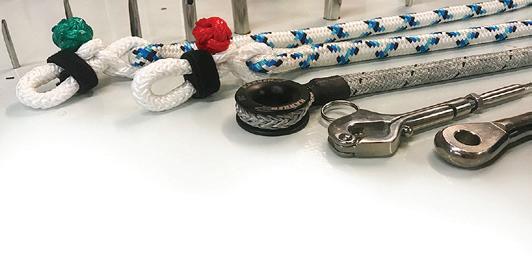
Furthermore, lithium battery banks needed for solar propelled systems routinely last more than a decade and are affordable when replacement is needed due to their smaller capacity requirements. Finally, and obviously, solar eliminates fuel costs during a cruise.
So, is solar-powered cruising for you? Simply put, the benefits of solar-powered cruising are valuable to those who like cruising at displacement boat speeds. You will be even more satisfied if you often travel long, remote passages where refueling is expensive, inconvenient, and sometimes unavailable; or you tire of the breakdown capacity and maintenance that accompanies combustion. Solar day boats are attractive to boaters who moor on a buoy or a private dock with no power to maintain a full charge. If you are an aging sailor like me, you will miss the excitement of a broad reach in a fresh breeze but will love the freedom from needing to navigate a surging foredeck


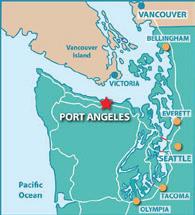

If this engages your imagination, the next question becomes: how long until you can switch to solar propulsion? That depends on your interest in being a trendsetter. Today, well-designed solar boats are still custom affairs and come with long design-build times, and custom prices. In other words, you can’t just go buy one and sail it away tomorrow. If you have the interest and money to be one of the first solar boaters, tech and components are ready now. If you value the tech element but are more interested in a stock design with many of the bugs worked out for you, you are an early adopter and will be able to choose a boat from a reputable builder in a few years. If you are not interested in tech, but still like the benefits, let some history happen before you jump in. Now that the concept has been demonstrated successfully for a range of boat sizes,
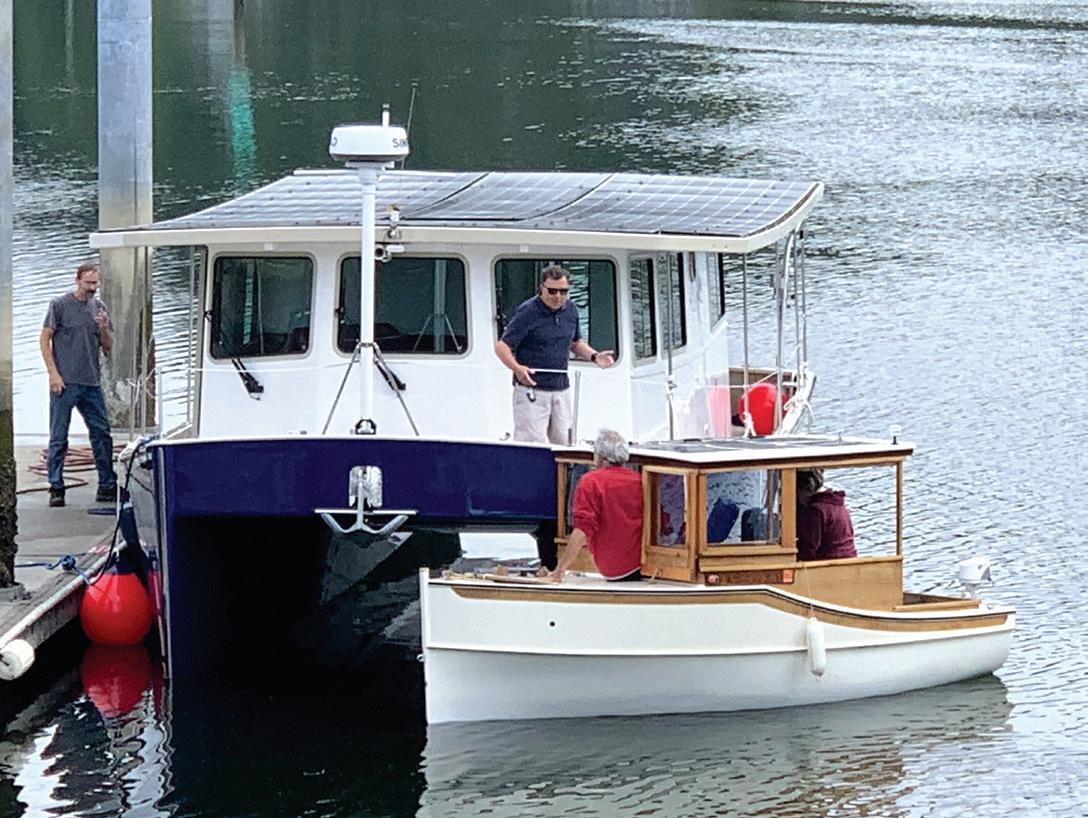
proven mass-produced options should begin to appear in 6-8 years. For those who like the benefits of free, naturalenergy-cruising but lack the funds to purchase a new boat, in 10-12 years it should be possible to find the first used solar boats on the market.
Having camp cruised in the company of dozens of other small boats over several years, I can say firsthand that solar-powered propulsion is a viable and rewarding way to go in this pursuit. The others mentioned in this article, however, demonstrate that the horizons are considerably broader. Solar-powered cruising comes with a level of independence that can only be matched by sailing (and then only when there is wind to be had; and solarpowered performance is statistically more predictable throughout a coastal cruise, even when faced with cloud cover).
For more information on long distance remote solar cruising, there are seminars at the Port Townsend Wooden Boat Festival and at the Seattle Boat Show that are worth attending. Sam Devlin Designs has completed several solar boat designs, and David Borton at Solar Sal makes a solar day boat on the East Coast. Though I can’t speak for other electric motor companies, I know that the one I’m involved in is enthusiastic about providing information about solar boating on smaller vessels, and I enjoy engaging with customers on the topic of solar and am happy to run predictions from my solar performance model for those interested.
The hardest phase of a new technology growth path is the innovator phase, and long distance remote solar cruising has made it. Keep a weather eye on solar sailing, the dawn of this form of boating is here.
Joe Grez has nearly 40 years of experience in product innovation and 47 patents. His company, PropEle Electric Boat Motors, manufactures the ultralight EP Carry electric outboard in Washington State. Learn more at www. electricpaddle.com. By the time you read this, he will have solar sailed another Salish 100.
A friend and I jumped in Sunnyside, my 14-foot solar electric converted sailboat, to circumnavigate Vashon and Murray islands in one day—a 38 nautical mile trip. A 14-foot solar boat is not fast, Sunnyside can maintain 4 knots over the water for 10 hours on a sunny day. On paper, that leaves no reserve range for this trip. However, we planned to leverage tides for another 5 miles of reserve, and I did bring extra batteries all charged up, just in case.
The trip started at 8:00 a.m. at the Point Defiance boat ramp. We transited up Colvos Passage on the outgoing tide, crossed the north end of the island at slack, and the plan was to ride the incoming tide south and back to Point Defiance by 6:00 p.m. that evening. Things evolved differently. Smoke from wildfires reduced our solar power by about 10%. We could not resist the urge to stop and fish for a few hours, causing us to pass the Point Robinson Lighthouse later than intended. On cue, a 15 to 20 knot breeze and matching seas built up from the south.

We could have pulled into Portage Bay and anchored for the night, but opted to continue. I think that choice was the only risk we took on this trip. If I were to do it again, I would have pulled in and anchored for the night. Nonetheless, we continued on, reaching Point Defiance right around dusk, hours behind schedule.
It was a great trip, but it does underscore some learnings specific to solar sailing. One is to track your plan and options when making a change, like stopping to fish, with a focus on making port by dark. In this case, we had sufficient charge for the remaining distance at reduced speeds but the weather intervened, which leads to the next lesson—we could have done a better job predicting the evening winds. Had we known this prevailing effect on those waters, we would have made better decisions earlier in the day. Another thing we learned is to not only watch tides and weather, but also track smoky skies in the summer that are becoming more common these days.
Finally, the safe plan is sometimes in conflict with the intended one. When foregoing an overnight in Portage Bay, I was influenced by the desire to make the circumnavigation, and thankfully it worked out. At the time, I must admit I was not sure. Next time, I’ll play it safe. My main takeaway from this trip, though, is simple: Get out there. This was an adventure worth having, with memories that will last.

by Stephanie Campbell
In late June, the sailing world converged in Anacortes from the far reaches of the Pacific Northwest for the region’s flagship event for summer fun and competition, Race Week. With five great days of racing and six fun nights of parties, it was worth the effort, no matter your homeport.
Living in Anacortes, it was fun to see the boats arrive in the weeks and days preceding the event, and to try to guess which new mast just appeared in the marina. Since I was racing in the 6 Meter fleet on Scallywag, it was especially entertaining to see them arrive—9,000 pounds of racing fury with winged keels on gigantic trailers. The 6 Meters were sailing the North American Championship for 2024, and most of the crews came from Canada, along with one hailing from the illustrious St. Francis Yacht Club of San Francisco.
On Sunday morning prior to the event’s Monday start, the marina was in full frenzy mode, with boats moving in and around to find their official home for the week. Friends old and new caught up on the dock, and Race Week was on! Sunday night, the band played and instructions were given, and there was an unmistakable feeling of celebration.
On Monday and Tuesday, conditions were nearly perfect on the water, sunshine and 10+ knots of breeze. The majority of the fleets sailed near the north shore of Guemes Island, and the 6 Meters and J/70s raced in the east end of Fidalgo Bay, in the vicinity of Hat Island.
On Monday, the 6 Meters had a giant blue tanker right in the middle of our course, and a split in the fleet was inevitable. It
wasn’t necessarily intuitive, but the money was on the left side of the course. The right looked good with an apparent tidal river sending you up the shore, not to mention a fair amount of eel grass, but the pressure was on the left for the win.
The J/70s sailed on a shorter race course and never got the chance to roll the dice splitting the tanker. They did have plenty of action and occasionally some thrills turning corners with us. It didn’t take them too long to realize that there’s not a lot of visibility under and around our 180% genoas. Danger!
On the North Course, there were J/105s, Melges 24s, J/80s, TP 52s, and an assortment of ORC and PHRF fleets. They had equally idyllic conditions, because at the end of the day we each thought we had it best.
Tuesday night was the second annual Race Week Film Festival, and the first annual viewing party in the campground. Sailors gathered in the dark to enjoy home movies from fellow racers. Winning this year was Brian Pernick from Bellingham with his story of “R2AK’s Team Spare Parts.”
Wednesday featured the event's first-ever pursuit distance race. Boats started in Fidalgo Bay and raced any course of their choice to Lummi Rocks on the northwest shore of Lummi Island and back. The 25 mile course offered many navigational choices and, while my one design fleet stayed back, I may have been solicited for local knowledge by more than one boat, and I was definitely hoping that I steered them in the right direction. I had some skin in that game! By the way, steer clear of Sinclair Island, it’s a trap for sure. The 6s and 70s started buoy racing in the bay that morning and, with a stiff breeze and big shifts, we must have been very entertaining in the pre-start area until our
The author and the Scallywag crew winning a pin-end start in the 6 Meter class.

race was abandoned and we moved out to the North Course. We chased the breeze around for a while before settling into a couple solid races. In the early afternoon the distance racers reappeared. It looked like the J/105s were leading the way, with the TP 52s hot on their tails. But little did we know, it was the Melges 24 Distraction that was super launched (see sidebar)!
The rain came in and the breeze dropped, and the friendly chase boat drivers towed us all the way home, bless their hearts. The 6 Meters don’t race with motors, and 9,000 pounds is a lot to paddle. And at times, there was a LOT of paddling! The evening entertainment featured Race Week favorite, Gertrude's Hearse. The crowd happily danced in the rain to the salty sailors delivering the tunes.
Changing the scenery once again, on Thursday we all raced together in the North Course area. The breeze lightened up, and we wondered if we were going to get races in. But when the sun came out, the wind settled in, and we enjoyed another great day on the water. The big fleet raced near shore and our one design fleets took the low side of the area, and somehow we never got mixed up in each other’s marks. The southwesterly eventually filled in strong, and we had a great sail home.
Back at the party tent, the ABBAgraphs got everyone moving! On Thursday evening, most crews eat dinner together, and then the usual suspects were up to their tricks, providing clever new names for boats under the cloak of darkness. You gotta keep it on for racing!
On Friday, we all raced in Fidalgo Bay. The big fleets raced up Guemes Channel, with all kinds of current pushing them upwind, followed by a bit of struggle getting back down with their kites. The 6s and 70s were tucked back in our little eastern corner with our tanker ship buddies and little islands to navigate. Challenging races and super fun times! The PROs did a fantastic job keeping the fleets separated and getting races off every day in a new location.
Mike Powell reports the ever-growing J/70 fleet (now nearly 50 in the PNW) pulled together 10 boats for 5 days and 17 races, with Mike Breivek’s FRAM nearly completing a picket fence on the fleet but for a couple of 3rds. Close behind was rising star Boris Luchterhand on RIFF who’s actively training for the upcoming World Championships in Palma de Mallorca. Behind them, racing was tight with position changes between Lek Dimarucot’s Flying Ace, Tolga Cezik’s Poyraz and Mike Powell’s Tally-Ho!, and many finishes being so tight it was hard to say
by Tom Greetham and LA Kaplan.

After the first two days of brilliant buoy racing in sunshine and 8-14 knots of breeze, PRO Charley Rathkopf saw an opportunity to shake things up and invoke Addendum C of the Sailing Instructions—Wednesday would be a Pursuit Distance Race with reverse PHRF start times based on individual boat ratings, sending racers around Lummi Rocks and back. Charley introduced us to the orange Roadrunner/Wylie Coyote flag that would be flying from the Race Committee boat and strongly advised that each respective boat review their posted start times.
The dynamic within the Race Week Melges 24 fleet had already established itself as friendly, supportive, and enjoyable competitive, with several boats gearing up for the 2024 Worlds in San Francisco. Similar to other onedesign fleets, the Melges teams have a spirit of helping each other, this year’s group of strong sailors spent a lot of time trading tips and stories on the dock, before and after racing.
The pursuit race presented an exciting challenge and opportunity, and something different than the typical sport boat race. The Melges 24 fleet had an informal meeting on the patio of Frida’s restaurant, where we compared notes and expectations over dinner. For some, a pursuit race was new. For others, especially those who had participated in Sloop Tavern Yacht Club’s immensely popular Race to the Straits, it was more familiar. Everyone walked away with the verification that our one-design boats would start at the predetermined time of 11:20:08.
Wednesday morning arrived with the promise of a southerly breeze, a little rain, and the baffling currents of converging tides on the east side of Guemes Island and north to Lummi Island. With a downwind start, boats hoisted spinnakers as soon as possible and maneuvered across Fidalgo Bay, looking for lanes of clear air as faster boats overtook slower ones that had started earlier.
On Tom Greetham’s Melges 497, Distraction, we popped our chute at the start and sailed a hot angle as we worked over the top of the J/105 fleet that started a minute before us. At times, we were in “lazy plane” mode as the wind slowly built. The entire fleet chose the more consistent breeze in the channel between Huckleberry and Saddlebag Island. The wind continued to increase as we passed north of the islands, and we were soon steadily planing, reaching speeds of up to 16 knots as we sailed the tight reach towards Lummi Island.
A major decision was which side of Vendovi to take. The majority of the fleet in front of us doused their spinnakers and sailed the slightly more direct route to the west of Vendovi towards the rocks. We chose the east side of and continued charging under spinnaker towards the southern tip of Lummi keeping boat speeds in the mid-teens. We briefly doused our chute and beat upwind until we could re-hoist the kite for the approach to the rocks.
Just over an hour after starting, we rounded Lummi Rocks in first, followed closely by another Megles 24, Comfort Monkey, and third was Ogopogo, the Left Coast Dart. Ironically, we noted that the TP 52s should have just started.
After switching to our jib and keeping well clear of the protruding shoals at the rocks, we concentrated on connecting the puffs and keeping the boat moving forward in the dying breeze. As the wind holes became bigger and our windex started doing occasional 360s, boats behind us were sailing on erratic opposite tacks. We struggled to make headway, but we eyed a distinct wind line and worked our way towards it. Managing to reach the new breeze, we took off again in a steady 10 knots and flat water. Looking back, we could see the growing hole filling with boats with windless, draped sails.
The angle of the new breeze allowed us to sail a rhumb line course towards the finish, and we rapidly put distance between us and the rest of the fleet. As we approached Jack Island and the race area of the previous two days, we saw a race committee whaler approaching—it was Charley and a few RC members checking on the progress of the fleet. With the fleet off in the distance, they laughingly wanted to know if we had rounded the correct mark.
Realizing that we had been fortunate to escape the light spot, we stayed quiet and focused as we sailed, knowing all too well another hole could open up and swallow us up as well. The winds built as we crossed Fidalgo Bay towards the finish line. As we finished, we looked back to see the first TP 52 coming into sight, just over 12 minutes behind us. We had sailed as well as we could and were thrilled to have won, but luck was definitely also on our side!
The entire fleet finished soon after, and soon the dock was buzzing with stories and comparisons of the race. And many agreed that the first-ever pursuit race put on by Race Week was a great success. Meep meep!

who got the line first until the committee gave the nod. It was first class one design racing.
Once again coach Ron Rosenberg, sailing on FRAM, helped the entire fleet improve throughout the week with many teams finding extra gears they didn’t have at the beginning. For this and his all-around love of the sport, he was awarded the Anacortes Race Week Sportsmanship Award.
Tom Greetham’s Melges 24 Distraction won the Pursuit Race, the Melges fleet, and the overall for Race Week 2024, with all bullets. Congratulations, that’s how to do it!
The rest of the honor roll includes John Aitchison with Moose Unknown winning the competitive J/105 fleet, Julian Croxall with Reckless in the J/80 fleet, John Buchan’s TP 52 Glory in ORC A, the Club Swan 42 Free Bowl of Soup in ORC B, and Bruce Chan’s J/111 65 Red Roses in ORC C. In the PHRF, it was Race Week favorite David Jackson’s Mad Dash taking PHRF A, and Brian White’s J/35 Grace E in PHRF B.
Winning the 6 Meter North Americans and the Modern division was Ben Mumford and crew on New Sweden (pictured in the title image on page 42). First in Classic went to Cameron Wallace on the beautiful CaVa, and first in Intermediate went to fleet cheerleader Erin Parker on Frenzy.
Thank you Anacortes Race Week organizers, volunteers, and supporters for a great week! It takes a village, and a whole lotta work to make it happen, and it didn’t go unnoticed.
Full results here: www.raceweekpnw.com/results
All photos courtesy of the amazing Jan Anderson.





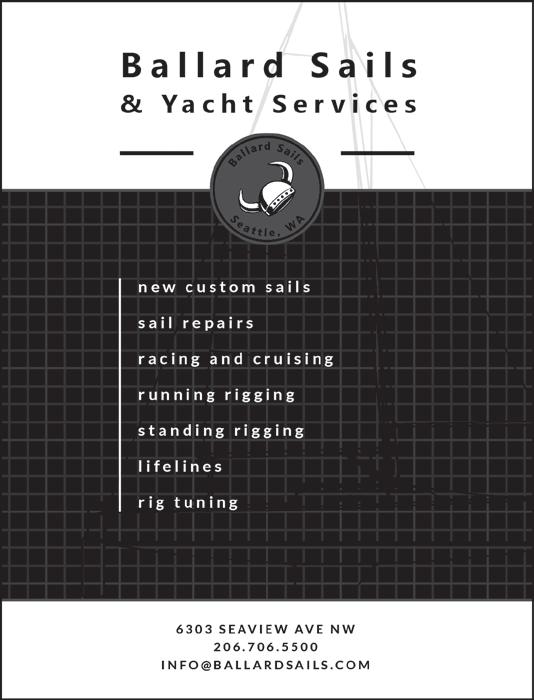
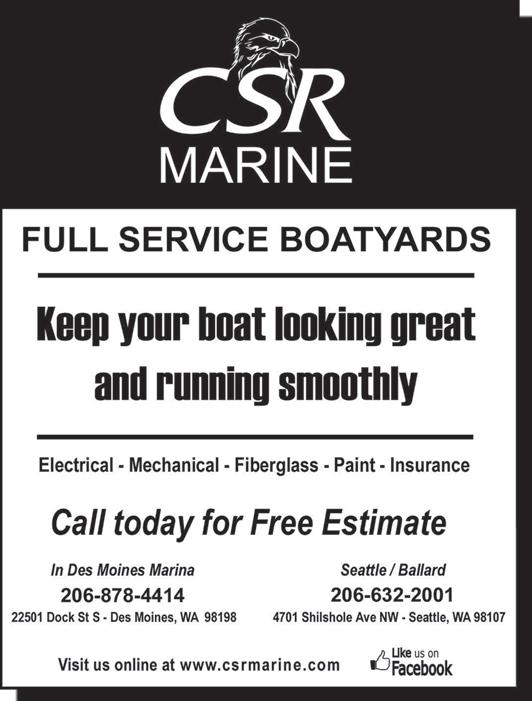

The Women at the Helm (WATH) series represents the best of activism in a joyful community. Thirty-four boats helmed by their female owners, co-owners, or offered by generous friends took to the water on July 20 to celebrate the women+ community in Puget Sound sailing. While the sport of sailing has become more equal for women+ by leaps and bounds in the last couple of decades, thanks to the incredibly persistent female pioneers who forged paths for the rest of us to follow, admittedly there is still a long way to go, both for women, and for diversity in the sport as a whole.
The vibrancy of events such as the Sloop Tavern Yacht Club’s WATH series does an incredible job of stewarding the work done so far, and making the pursuit of diversity in sailing a natural and joyful part of the race schedule.
The race committee signaled a one hour postponement to kick off the event, as the wind was taking its sweet time waking up on the laid-back Saturday morning. As the gentle breeze established itself from the north-northeast, the race committee flawlessly ran through the starting sequence, sending boats off on their 16 nautical mile course.
The race started in classic Shilshole fashion with boats flirting with the beaches as the fleets made their way up
towards Woodway. As the flooding current took hold, the group rounded the NOAA research buoy and set a course for West Point. The downwind leg was where the real fun began, as the wind faltered, scattering mini-doldrums across the sound, interwoven with passages of light breeze that created an almost total reset at the leeward mark.
The penultimate windward leg saw the conditions settle and build to a consistent 12 knots, which stuck around through the finish. In class six, Katie Biely and her Ratfish crew got away and never looked back, taking first in class.
Stephanie Campbell skippered Christa Bassett Ross’s sweet new ride, Lightly Salted, and took second. Like many boats out on the water, her crew had never sailed all together, a pattern which was repeated, especially on the few all-female boats, and was illustrative of WATH regattas, where teams come together and pull off competitive races without the benefit of a “regular crew or positions.” Aboard the Sierra 26, Dos, the team “came together really quickly despite having not sailed together before. There was great communication, leadership, and instruction. Everything just takes practice, learning, and confidence.
As the team reflected on the day and racing with an all female crew, Vikki commented that, “In over 20 years of competitive racing, I have been witness to the progress of diversity in sailing, and I have to say, never have I learned more quickly than working with a crew of capable women. There is something quite remarkable that happens when a group of gals are left to their own devices—women can go anywhere and accomplish anything when presented the opportunity. And together they can do so joyfully, with compassion and communication, and full of laughter.”
The crew of Dos would like to say thank you to everyone in the sailing community, from organizations like SEASTR, who are committed to expanding opportunities for underrepresented communities in sailing, to individuals who go above and beyond to create space and welcome new faces into the sailing community. Big thanks to Brad for lending a beautiful Sierra 26 to a group of tearaway women to go racing!
Also, thanks goes out to the Sloop Tavern Yacht Club and their sponsors for putting on this event, we will see you all on September 21 for Women at the Helm Part 2. Tell your friends!

The Sierra 26 Dos heads downwind in Shilshole Bay.


$42,500
1983 BABA 30
Designed by Robert Perry and built by TaShing. Cabin and topside painted with Awlgrip in 2015, new mast and standing rigging 2017. Repowered in 2001 with a Yanmar 3GM30 diesel. Dawn Treader has been well loved and well maintained, located on a private dock in Hansville, Washington. » Contact Bruce Cosacchi • (206) 819-7079
• pbc200606@yahoo.com • $42,500
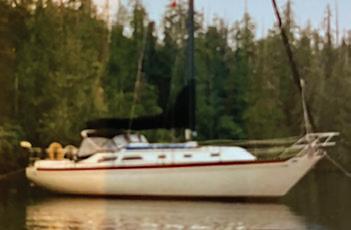
$26,500
1978 CLASSIC ISLANDER 36 SAILBOAT
It’s time to sell our Islander 36. Original owners who purchased the boat new in 1981 from the dealer. It has a mahogany interior, black mast, ivory hull. We repowered in 2010 with a new Yanmar 30. It has a Furlex bow roller, and a new jib purchased in 2017. This is a great sailing boat. Currently dry docked in Anacortes. » Contact Jack Land • (206) 255-5205 (Text Only) • j3lane@aol.com • $26,500

ANNAPOLIS 44
Annapolis 44 hull and deck for sale. Project build your own sailboat. Hull and deck are in great shape boat is located in Arlington WA. » Contact Blair Matthews at (360) 631-7749 or Grant at (360) 466-5152. • bcmatt4@yahoo.com $12,500 $12,500
$16,250

1988 ERICSON 26
Ericson craftsmanship in a 26 boat with a 40’ attitude. Dodger, wheel steering, fin keel, spade rudder. Flexible interior sleeps 5 with double bed at 6’ headroom, dining table, propane stove, ice box & marine head. New in 2022; bottom paint, hull mounted transducer depth & speed indicator, batteries, halyards. Universal 10 HP diesel. » Contact Scott Crosby • (503) 267-5207 • richlifesmallspace@gmail.com • $16,250
$21,500

1984 J/30 SAILBOAT
Excellent family racer/cruiser, cruising interior and galley, sleeps 5. Propane stove and oven, diesel heat, pressure water, large icebox. Cruising and racing sails. Fresh water cooled Yanmar 2GM engine. Speed, wind and depth instr, VHF with DSC and AIS, ST2000+ tiller pilot. » Contact SvCelebration4sale@gmail.com • $21,500

1981 C&C 32
Ready for day sails and coastal cruising. Low-hour Yanmar diesel engine. Moored in freshwater in recent years. Recent Upgrades: new batteries, new sail/ binnacle cover, new genoa UV cover. Other Equipment: chartplotter, autohelm, radar, VHF, anchors/rodes, sails and rigging in good condition. Located in Lake Union
» Contact Byron Wong • (503) 908-3886 • seattlecc32@gmail.com • $17,800 $17,800
$64,000

BEAUTIFUL BENETEAU OCEANIS 361 2002
Entire life in fresh water, 3 cabin design. Life has changed and she needs a new sailing family! Gorgeous cherry finish throughout spacious cabin. Extra large head and shower area. Length 36’ 5”, Beam: 12’6”, Draft: 5’ 0”, Wing keel, Single Westerbeake diesel, Power 27 hp, Hours 1100. Mainsail, Furling Genoa, Spinnaker. Location North Idaho. » Contact Danette Driscoll • (509) 280-3108 • danettedriscoll@yahoo.com • $64,000
$115,000

PASSPORT 40 1983
World Capable Cruiser. Ready to take you cruising.
Beautiful yacht. Cutter rigged with oversized rigging and extra cockpit winches. Lots of newer equipment; 40 hp Yanmar engine, autopilot, radar, stove/oven, watermaker. Cruise equipped; large sail inventory, windvane, heater, fridge/freezer. 2018, engine and power train refurbished at $20K cost. Orcas Island, WA. » Contact Tom Owens • (360) 632-8896 • svlandsend@yahoo.com • $115,000

CUSTOM 43’ EDSON SCHOCK KETCH (1973)
Professionally built of mahogany planking over oak frames, Debonair has been lovingly maintained. Extensive upgrades include new electrical and 75hp Yanmar. Consistently turning heads, Debonair is a seaworthy passage-maker, recently completing a 16,000nm tour of the South and North Pacific. From rig to sails, systems to safety, Debonair is voyage-ready. Details: porttownsendboatco.com or www.yachtworld.com/yacht/1973-custom-edsonschock-43'-ketch-8441971/ » Contact Vance Rucker • ketchdebonair@gmail.com • $72,900
$19,750

Restored 1977 19’ sail/cruiser, new Harkin hardware, new teak trim, new 6hp Tohatsu long shaft w/tank, trailer w/spare tire, mainsail, genoa, spinnaker, newly painted hull & deck, interior & exterior cushions, portable head, anchor & line, boarding ladder, new battery, shore power connection, flag and mount, new paddle, new pike pole, bilge pump, fenders & mooring lines, compass. » Contact Roger H. Newell • (206) 465-0375 • rhnaia@yahoo.com • $19,750

$45,000
$299,000

1985 OCEAN ALEXANDER 56
This is a 3 cabin motor yacht with 2 heads/showers. The galley/dining area includes the lower helm station, full size refrigerator/freezer, propane 3 burner stove/ oven, microwave, stainless steel sink, dining table with seating for 5. Twin DD 6-71TI’s, Naiad Stabilizers, electronic controls, autopilot, bow thruster, Ray Marine MFD. 986 gal fuel, 315 gal water, 73 gal holding. 61’ LOA » Contact (425) 787-9616 • 8dhansen8@gmail.com • $299,000

$65,000
36’ ROUGHWATER CRUISER 1981
Cruise 8k, plane to 15k. Fiberglass hull. 6cyl turbo diesel, 3500 hrs. New Raymarine chart plotter. Radar, AIS, 3000w inverter. Maxwell electric windless, 200’ chain. Solar panels. Tecma electric toilet, 35 gal holding tank, 200 gal diesel, Propane stove and Cozy Cabin heater. Reefer/ freezer. Recent Survey. Located in Pleasant Harbor WA. » Contact Brad • (360) 774-0912 • carreirasuzanne@yahoo.com • $45,000

$49,500
CABO RICO 38 - REDUCED PRICE
Excellent boat for a couple to cruise. We have cruised her over 10,000 miles, and her previous owner sailed her to the South Pacific (Australia) and back. She has been well maintained over all that time. Easy to sail, comfortable, and safe boat to cruise. World class designed and built to the highest standards. » Contact George P Leonnig • 1(503) 707-6062
• moctobi@gmail.com • $65,000
$72,900 26' COLUMBIA MACH II SAILBOAT A CLASSIC!

$6,000 1976 TAYANA CT 37 A CLASSIC BOAT READY TO GO!
This Tayana CT 37 has kept her four different owners safe and comfortable cruising throughout the world. Since 2008, she has been on an extensive refit and maintenance program while cruising Mexico and the Salish Sea. Ask for 2021 survey. Bottom paint and hull wax most recently June 2024. New standing rig 2020, turnbuckles in 2016. See more photos and info at https://tinyurl.com/pelicanmoonforsale » Contact Wade and Carla Bamer • (360) 808-4288 • cblongwalker@gmail.com • $49,500
It is time to sell our beloved family boat. Many upgrades over the years. Electronics- depth sounder, wind indicator. Force 10 kerosene heater. VHF radio. Sunbrella upholstery. Alcohol stove. Head with sink & holding tank. Upgraded rigging. Roller furler. Dinghy. Bruce Anchor. Spinnaker. Dodger with awning. Stern rail w/ built in ladder. 9.9 Mercury outboard. » Contact Robin McCain • burtonmccain@msn.com • $6,000
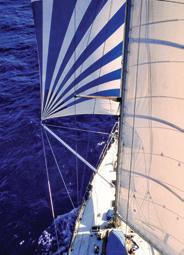

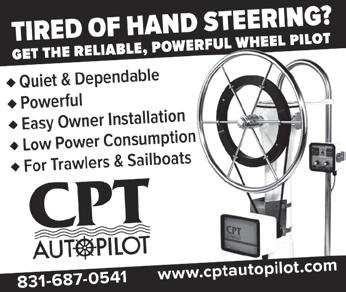



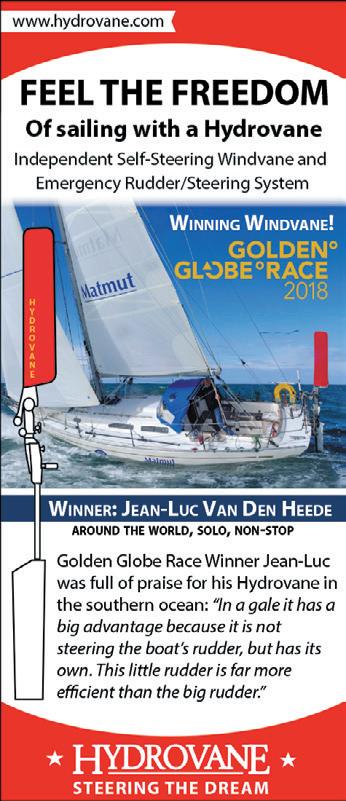


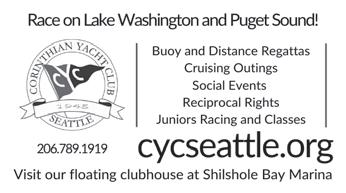










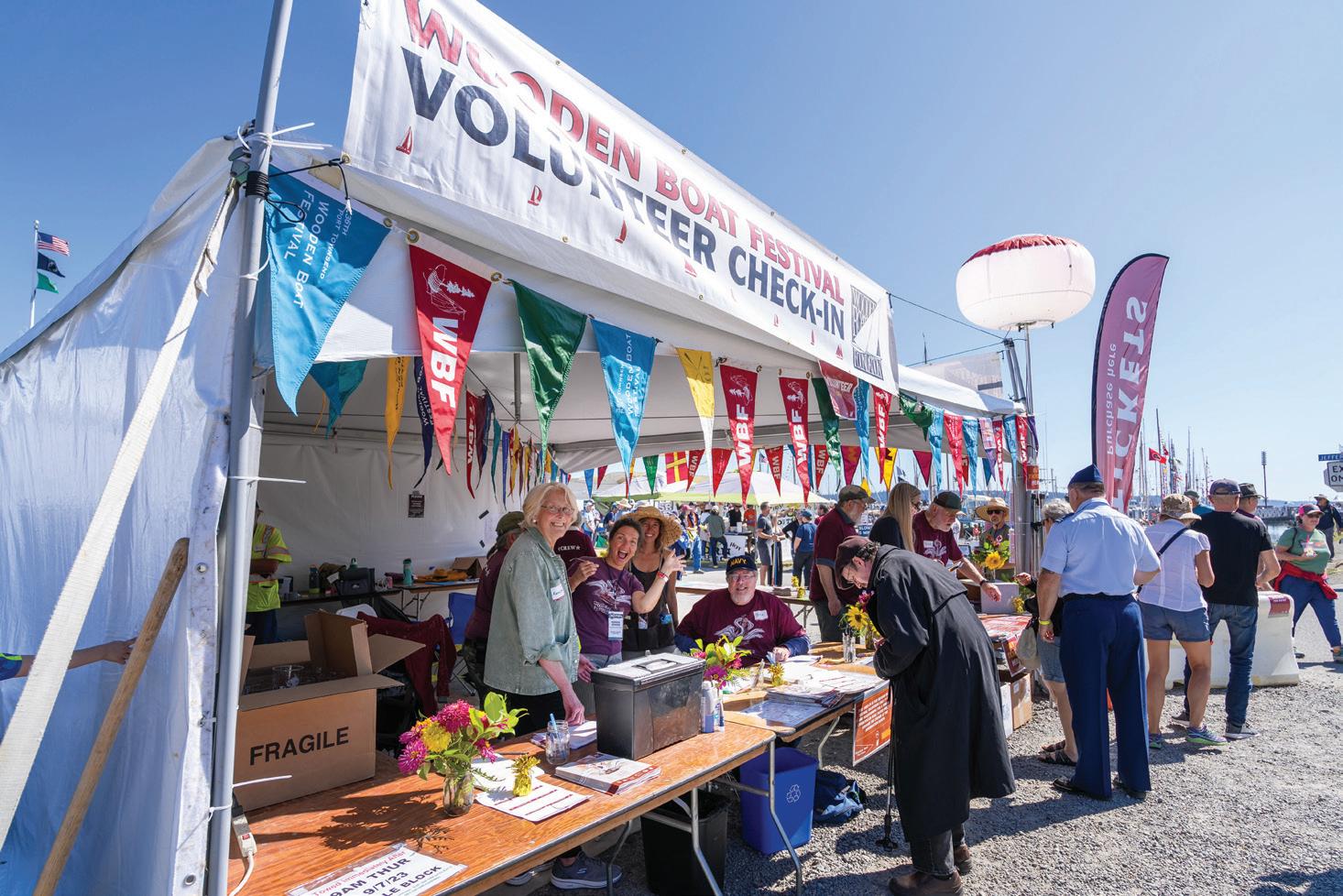




70’ SANTA CRUZ 70 ’85
$295,000
....................
“CHARDONNAY III” Turnkey Subchapter T vessel ready for charter business. Great opportunity to obtain a swift sailing passengers-for-hire boat
54’ ROBERTS 54 ’79
$225,00
“SPIRIT” Rugged bluewater vessel designed with comfort and safety in mind. Nicely upgraded.Coast Guard Certified for up to 42 passengers.
45’ BENETEAU OCEANIS 45 ’14
$305,000
....................
“ADELIE” Bright, airy interior with all the bells and whistles. Solar panels and upgraded electrical system. Three private staterooms.

44’ KELLY PETERSON KP44 ’79$67,000 “KAREN B” Clean, well-maintained cruising classic with handsome lines from renowned naval architect Doug Peterson.
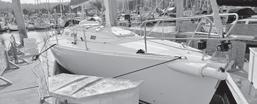
40’ J BOATS J/120 ’99 $108,000
“SUR” Popular racer/cruiser is a Mexico vet. Set up for cruising but would be suitable for club racing.

39’ ERICSON 39 ’71 $79,500 “TRAVELER” Ideal performance cruiser for short-handed sailing. Meticulously upgraded. Nicely finished interior.



38’ CATALINA 380 ’97
SLOOP” Well laid out, spaciously designed coastal cruiser for daysailing, coastal cruising and living aboard.

38’ CATALINA 380 ’00
$98,000 “BEYONDTHESEA”Meticulously cared for. The gelcoat shines. Inside is impeccable. Great deck layout for ease of sailing.















Allures cruising yachts feature aluminum hulls, fiberglass cockpits and cabin tops, centerboards, and twin rudders. The benefits extend beyond their strength, shoal draft, and ability to dry out. Downwind sailing performance and comfort are greatly improved with the centerboard raised up into a trunk. Timeless Odyssey was sailed around Europe and to the Caribbean by her owners. She has a full kit of blue water cruising gear, including solar, wind, and tow generator, Hydrovane steering, and everything needed to head off across oceans. This is an excellent choice for a family or couple wanting to cruise the Bahamas and beyond. Think of the cruising grounds available with the 3½ foot (1.05m) draft!





